



Parenting Life After Your Child Has Left the Nest Preparing School for Your Blind Child Exceptional Needs TODAY Issue 11 PROMOTING PEACE ADRIAN WOOD: WHAT HAPPENED WHEN WE SAID GOODBYE TO THE IPAD DOES AUTISM “CANCEL CULTURE” EXIST? WHAT IS “GOOD” THERAPY? HOW TO TALK WITH PEOPLE SO THEY “CLICK” WITH YOU UNDERSTANDING MASKING

Securities and investment advisory services offered through qualified registered representatives of MML Investors Services, L LC, Member SIPC. 4350 Congress Street, Suite 300, Charlotte, NC 28209. 704 -557-9600. A Special Needs Plan is not a subsidiary or affiliate of MML Investors Services, LLC or its affiliated companies. A Special Needs Plan can help answer these questions: 1. Who is going to take care of your child after you are gone and where will they live? 2. How much will that care cost and how are you going to pay for that care? 3. Do you have a special needs trust and do you know how much money you will need in it? How are you going to fund it? How are the funding instruments taxed when you die? 4. What government benefits are available to your child and how do you apply for them? 5. What is the Medicaid waiver and how do you apply for it? 6. How will you communicate your plan to family members? www.ASpecialNeedsPlan.com Phone (704) 326-7910

07
WHAT HAPPENED WHEN WE SAID GOODBYE TO THE IPAD
Adrian H. Wood, PhD
Enjoy an inspiring account of a family’s decision to reduce reliance on an iPad for their son’s entertainment and how it has helped him become more connected and engaged with the world.

TOPICS WITH TAMMY THE FIVE PS OF SPECIAL NEEDS PARENTING Tammy Flynn
Try applying Tammy’s tips for navigating your child’s initial diagnosis and its aftermath while being mindful of your mental health.
UNDERSTANDING MASKING AND ITS IMPACT ON SOCIALEMOTIONAL DEVELOPMENT
Dr. Chris Abildgaard, EdD, LPC, NCSP, NCC
Understand the reasoning behind neurodiverse masking and its toll on mental health when people feel forced to disguise themselves in social interactions.
SHAPING OUR FUTURE BEHIND THE SHIELD: HELPING CHILDREN MANAGE EMOTIONS DURING STRESSFUL LIFE EVENTS
Rose Adams, OTD, OTR/L
Consider the difference between protection and support and what you can do to become the shield that offers a safe space for a child.
LET’S NOT BECOME A DIVIDED SPECIAL NEEDS COMMUNITY
Jeanetta Bryant
Consider the consequences of speaking over or harshly judging others when parenting exceptional needs individuals.

POSITIVE VOICES
JAKE BUCHNAT: NAVIGATING THE WORKFORCE WITH EXCEPTIONAL NEEDS
Margo Marie McManus
Meet Jake Buchnat, a Verizon Connect employee whose coming out as autistic greatly improved his workplace environment and relationships.

PUTTING IT BLUNTLY: WE NEED TO TEACH AUTISTIC (AND OTHER NEURODIVERGENT) GIRLS ABOUT SEXUALITY

Marcia Eckerd, PhD
Acknowledge how a lack of sexual education exacerbates one’s vulnerability to relationship abuse, particularly in neurodivergent girls.
EXEPTIONAL PRODUCTS & TOOLS
BANKABILITY IS A REVOLUTIONARY VIRTUAL BANKING SYSTEM SPECIFICALLY FOR STUDENTS WITH AUTISM


Learn about Bankability, a revolutionary virtual banking system launched by Digitability designed for students with different abilities.
SAFETY GOALS WITH NICOLE TEACHING LIFE AND SAFETY SKILLS TO CHILDREN WITH DISABILITIES
Nicole Moehring
Learn ways to teach children the skills they need to stand independently in the future and help negate potential danger.
GIRLS JUST WANNA KNOW HOW TO MAKE FRIENDS
Karen Kaplan
Help your autistic loved one start building friendships by trying tips from Friendships Don’t Just Happen! by Shasta Nelson.
41 EXCEPTIONAL BOOKS VIEWS FROM THE SPECTRUM: A WINDOW INTO LIFE AND FAITH WITH YOUR NEURODIVERGENT CHILD
This book, written by Ron Sandison, threads personal experience, religious faith, scientific research, parenting advice, success stories, and more to celebrate the internal world of autism.
ALL THINGS OT UNDERSTANDING EMOTIONAL STATUS THROUGH IMAGERY
Laura A. Ryan, OT, OTR, OTD
Learn about two visualization and categorization methods for individuals to learn how to identify and manage their emotional state and response to a stimulus.
Issue 11
Contents
29 26 22 25 19 10 15 33 38 42 4 | Exceptional Needs Today | Issue 11
DIAGNOSING AND TREATING TOURETTE SYNDROME
J. Edwards Holt
Familiarize yourself with Tourette syndrome, how it can manifest, and some current treatment methods.
SELECTING THE RIGHT PROVIDER FOR YOUR CHILD AND FAMILY: WHAT IS “GOOD” THERAPY?
Maria Gilmour, PhD, BCBA-DA Guide family therapist selection using the insights and questions provided by an established behavioral health therapist.
Exceptional Needs TODAY
KATE MAKES
IT

GREAT! DEDUCING THE CAUSE OF UNWANTED BEHAVIORS
Kate C. Wilde
Implement Kate’s brainstorming system to uncover the possible cause behind a child’s change in toileting behavior.
YES, I’LL HOLD…NAVIGATING INSURANCE CLAIMS AS A SPECIAL NEEDS PARENT
Carmen A. Brown
Read on as a mom shares her frustrations with the drawn-out process of managing insurance coverage for exceptional needs services over the phone and how she got the help she needed.
FINANCIAL FOCUS
US GOVERNMENT BENEFITS AND PRIVATE FUNDING CAN CREATE A GREAT LIFE!
Ryan F. Platt, MBA, ChFC, ChSNC, CFBS
Remember to secure your loved one’s future by preparing to supplement lapses in government disability support via private funding.
MEET THE ADVOCATE Q&A WITH PARENT COLLABORATOR HELPING SPECIAL NEEDS FAMILIES SUCCEED
Amy KD Tobik
Meet Maria Gilmour, PhD, BCBA-DA, and learn her perspective on the challenges families face when coordinating care and education.
PREPARING A SCHOOL FOR THE ARRIVAL OF YOUR BLIND CHILD
Dr. Ronald I. Malcolm, EdD
Review ten practical tips to assist with making the arrival of your child into a regular education setting more successful.
THE FRIENDSHIP & DATING DUO HOW TO TALK WITH PEOPLE SO THEY “CLICK” WITH YOU
Jeremy Hamburgh and Ilana Frank
Learn how to spark deeper relationships by revealing your valuable strengths.
DOES AUTISM “CANCEL CULTURE” EXIST? HOW CAN WE HAVE RESPECTFUL DISCUSSIONS ONLINE?
Raun K. Kaufman
Consider what getting “canceled” means, the potential reasoning behind someone’s online negativity, and how you can move past it and help others do the same.
EXCEPTIONAL ADVICE FROM MESHELL
PARENTING LIFE AFTER YOUR EXCEPTIONAL NEEDS CHILD HAS LEFT THE NEST
Meshell Baylor, MHS
Gather ideas for rediscovering yourself when your child transitions to adulthood outside the home.
NATURE NOTES
GROWING GENERATIONS OF HEALTHY GARDENERS
Amy Wagenfeld, PhD, OTR/L, SCEM, EDAC, FAOTA
Find out how the act of gardening, when made accessible to all, can be emotionally fulfilling while also serving as a multi-faceted tool for sensory and academic education.
HATS OFF TO OUR EXCEPTIONAL CONTRIBUTORS AND BOOK AUTHORS
Amy KD Tobik
Start the New Year by celebrating the incredible people who shared their voices with Exceptional Needs Today in 2022.
Our mission is to educate, support, and energize families, caregivers, educators, and professionals while preparing all families for a healthy future.
exceptionalneedstoday.com
Founder/Publisher
Amy KD Tobik
Lone Heron Publishing, LLC
Magazine Staff
Editor in Chief: Amy KD Tobik
Editorial Assistant: Margo Marie McManus
Content Writer: Emily Ansell Elfer
Editorial Support: Ganesh Dhungana Copyeditor: Derik Hicks
Social Media: Dione Sabella
Graphic Designer: Patrick Gwayi
Professional Consultants
Chris Abildgaard, EdD, LPC, NCSP, NCC Debra Moore, PhD
Brett J. Novick, MS, LMFT, CSSW Annette Nuñez, PhD, LMFT Ron Sandison
Amy Wagenfeld, PhD, OTRL, SCEM, EDAC, FAOTA
Contact Us editor@exceptionalneedstoday.com advertisingdir@exceptionalneedstoday.com advertising@exceptionalneedstoday.com submissions@exceptionalneedstoday.com editorial@exceptionalneedstoday.com
Exceptional Needs Today is published four times a year and distributed digitally to readers for free by Lone Heron Publishing.
Disclaimer: Advertised businesses and products are not endorsed or guaranteed by Exceptional Needs Today, its writers, or employees. Always follow medical advice from your physician.
EXCEPTIONAL NEEDS TODAY
46 79 82 71 75 54 56 60 63 49 52 67 Exceptional Needs Today | Issue 11 | 5
I recently stopped for a cup of coffee as part of my pledge to decompress for a few minutes each day. The line was long, but the employees diligently worked to meet the demand. When my drink was ready, I received a flustered apology from a young barista. I assured him it was OK; he honestly could not have done any better. But I paused when he added, “Thank you for not yelling at me.” Sadly, customers had verbally abused him throughout his shift. I shared his frustration that day, and today I am still left wondering why flippant mistreatment has become a recurring theme. Where did patience and compassion go?
During my break, I decided to catch up on social media as I follow several established bloggers within the exceptional needs community. These amazing advocates, primarily parents, generously invite strangers into their uncensored daily lives to create open discussions and camaraderie. Of course, trolls and everyday naysayers are not new to the internet, but the intensity of confrontational, denigrating comments posted by strangers on these pages is troubling. Words intended to divide. Words intended to sting.
This surge in verbal and online abuse has become a hot topic when chatting with friends and colleagues. We continually ask one another why this is happening. How do people feel compelled and justified in spewing hurt? What fuels this anger? And most importantly, how can we work to reduce quick judgment and embrace kindness on these pages?
When working with Raun Kaufman, a self-advocate, author, and cocreator of Autism Crisis Turnaround, he mentioned that he, too, has sensed an increase in hostility online. Instead of having respectful conversations, these individuals attempt to prevent others from having or sharing thoughts with which they disagree. In his piece, “Does Autism ‘Cancel Culture’ Exist? How Can We Have Respectful Discussions Online?” Raun shares the potential reasoning behind online negativity and ways to move past it. It’s an excellent read for people of all abilities and worth sharing with friends and family.
In her article, “Let’s Not Become a Divided Special Needs Community,” autism mom and founder of Abilities Workshop Jeanetta Bryant generously shares her experience surrounding division, specifically within the special needs community. As she explains in her piece, when people speak as “the expert” for the group, they tend to polarize those with different experiences. Her article is a valuable reminder to stop and evaluate how you interact with the community online. Reducing infighting is vital if we are to support one another in helping children and loved ones be their best selves.
Everyone is different. We all learn in our own way. So even when we attempt to hyper-define one another, our perceptions are not always accurate. Respectful conversations are critical to understanding one another and to creating a supportive community. When people are allowed to share without the threat of disrup-
tors, it establishes a safe haven for understanding. It enables people to grow—and to bond.
This brings me to our magazine cover featuring well-known special needs advocate Adrian H. Wood, PhD, and her charming nine-year-old son, Amos. Adrian is renowned for her popular blog, Tales of an Educated Debutante, which chronicles her life as a mother of four and reflects her concerns regarding education and society. In her article, Adrian shares a pivotal moment from last spring when her son’s iPad tragically crashed down a stairwell the day before a flight to see his grandparents. Concerned about what life would look like for the entire Wood family without the device to entertain Amos, she immediately ordered a replacement to be delivered to their destination. But upon arrival, Adrian had second thoughts about reintroducing the iPad. Much to her surprise, after many tough days crammed with what seemed like nonstop physical activity to distract and calm, Amos began to blossom into a more active, verbal, and social child. Be sure to read her inspiring account in “What Happened When We Said Goodbye to the iPad” as she poetically reflects on her family’s journey. True to her style, Adrian shares her experiences without judgment—without placing guilt.
We are thrilled with the fantastic variety of articles in this issue, including pieces on helping children manage emotions during stressful events, teaching life and safety skills, parenting life after a child has left the nest, and thoughtful advice on how to forge friendships. Additional guidance includes ways to navigate insurance claims, how to help prepare a school for the arrival of a blind child, valuable information on Tourette syndrome, and so much more.
We cannot forget to mention that this issue includes the exceptional contributors and book author award winners for 2022. As you may remember, Exceptional Needs Today received the Gold Award from Mom’s Choice Awards for our work in 2021. To continue to express our thanks to the community, we have selected 23 notable contributors and book authors for special recognition. We are grateful to highlight so many voices throughout the years.

As we enter 2023, let’s continue to promote compassion and peace. Let’s be louder than the naysayers.
Best,
Amy KD Tobik
Editor-in-Chief, Exceptional Needs Today Publisher, Lone Heron Publishing

From the Editor’s Desk PLEASE JOIN OUR EXCEPTIONAL COMMUNITY PROMOTING PEACE 6 | Exceptional Needs Today | Issue 11
What Happened When We Said Goodbye to the iPad
By Adrian H. Wood, PhD
It’s been nine months.
We had been invited to a lovely Easter brunch at our cousin’s house and, of course, the iPad came along.
Truthfully, his best friend.

Only then, I didn’t know it or didn’t know what to do about it.
Life with autism is a game of picking your battles.
Moderation is a struggle.
Exceptional Needs Today | Issue 11 | 7 MY WORD
Most parents will tell you that it’s all or nothing.
Cheeseburgers for dinner? Check.
Elastic cozy pants? Check.
Sleeping in Mommy’s bed? Check.
The iPad all day every day? Check. Check. Check. When you live on the struggle bus, it’s hard to get off.
The iPad has been his best friend/babysitter/pacifier for years, and any limits we once had were long gone.
Like when he wakes up for the day at three a.m. You take your kids out to dinner. Or you want to go to someone’s house for a family brunch.
And so came the fateful day of the death of his iPad—April 17, 2022.
Maybe it was a bad internet connection. Maybe the battery was low.
Whatever the cause, I heard the bang and clatter as it bounced down a flight of one-hundred-year-old steps like Santa falling down the chimney on Christmas Eve. The iPad was toast and so was I.
The spare had broken a few weeks before and so, a long Sunday afternoon loomed before us. I pushed him in the swing and cried as I ordered one at Walmart to pick up the next day. That long afternoon was spent playing on the sand pile and in the neighbor’s swing. It was the longest day of my life—though after I tucked him in for the night; I wondered if we could do it. Give it up completely? The next morning, his unusually happy self woke up his brothers and sister—called them by name.
I was even more convinced that this was a path worth traveling. It wasn’t easy.
We spent a tremendous amount of time in the swing.
Hours and hours that had once been filled with YouTube were now there for the taking. It was a huge adjustment.
No more going out to dinner easily.
A big trip to Barnes & Noble for a collection of his favorite books. Plain old watching television. Not just showing an interest and playing with LEGO or more reading of books, but willing to go on outings such as boat rides and trips to the Dollar General, running errands, and even church occasionally. We haven’t been able to do that since he was a non-walker.
He’s not perfect, but we let that go a long time ago. A few dropped prayer books and loud whispers are small potatoes to our family.
We have found a new normal, and I’ve been trying to wrap my mind around the many changes that have completely caught me off guard.
I thought I knew him so well and yet I didn’t know a dumb old device was keeping him cut off from the world.
It’s been tiring, thrilling, amazing, and a change that occupies far more of Mommy’s time. Less working and more Amos.
But, it’s fun. He is fun.
Even his teacher said, “He took a friend’s hand and led them to the carpet. He’s NEVER done that before.”

8 | Exceptional Needs Today | Issue 11 MY WORD
He says hello to his siblings and their friends. The child who has never noticed a new person in the room is now saying, “Hey!” to every person he encounters. It’s the damndest thing and I’m so proud. Especially of him.





And I won’t pretend that there haven’t been some really hard moments. A restless nine-year-old with a genetic disorder, autism, anxiety, and ADHD is quite an enterprising individual. Particularly with no iPad as a babysitter. Years of toddlerhood will take a toll on a person, which is why you see parents like me allowing such freedom on a device. I never want to be someone who sugarcoats life. I don’t want anyone to feel guilty that they rely on an iPad to survive. It’s just that life is honestly better without it. Transitions are easier. And we are thinking about reintroducing an iPad as a speech device which has never been an option before.
I want Amos to be a part of our world. I want to know him and his heart. And more than anything, I want him to know that he has mine.
and finds true meaning in graceful transparency.
Facebook: https://www.facebook.com/talesofaneducateddebutante
Instagram: https://www.instagram.com/talesofaneducateddebutante/
Exceptional Needs Today | Issue 11 | 9 MY WORD
Adrian H. Wood, PhD, is a rural Eastern NC mother of four, one with extra special needs. Past preschool teacher, nanny, children’s ski instructor, early interventionist, college professor, early childhood researcher, wife, and full-time mama. In writing after a 20-year hiatus, she offers personal glimpses where satire meets truth, faith meets irony, despair meets joy, and this educated debutante escapes the laundry
TOPICS WITH TAMMY
By Tammy Flynn
I AM SURE MOST PARENTS IN THIS SPACE WOULD AGREE THAT NAVIGATING THIS SPECIAL NEEDS JOURNEY IS A DAILY LEARNING PROCESS, SOMETIMES EVEN AN HOURLY ONE. I FELT THIS IN THE EARLY DAYS AS A SINGLE MOTHER OF FOUR WITH MY THIRD CHILD BEING BORN WITH COMPLEX MEDICAL CONDITIONS AND DIFFERENT ABILITIES.
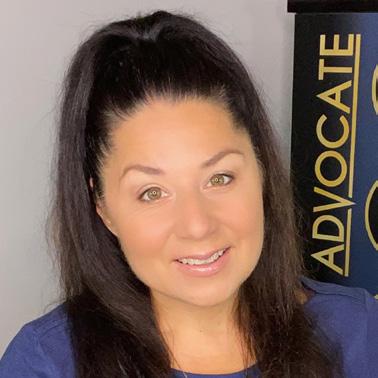

The Five Ps of Special Needs Parenting 10 | Exceptional Needs Today | Issue 11
Iwas trying to juggle it all—kid’s activities, schoolwork, therapy, doctor appointments, hospital stays, and working outside the home. All of this while trying to figure out what the heck my new title of “special needs mom” even meant and trying to learn this new foreign language the doctors, therapists, and teachers spoke. After all, when we started our journey back in the dinosaur days, it wasn’t possible to YouTube it, google it, search it on TikTok, or find it on Facebook.
I think that as parents of children with special needs, we get innovative as we try to figure out strategies and supportive tools that can help us create the best outcomes along this journey. That being said, I am excited to share one of my favorite strategies with you. It is one I have found to be extremely helpful in working through times of overwhelm and adversity and has allowed me to take a breath, focus, and take things step by step.
Let me introduce what I like to call the five Ps of special needs parenting: process, prioritize, plan, patience, pray. These five steps focus on helping you navigate and work through different areas of choice—everything from your child getting diagnosed to prioritizing your own personal mental wellness.
Today we are going to do a mixture of both as we overview each area. So tailor these five steps to your current situation and needs.
1. Process
In the space of special needs parenting, there is so much information, thoughts, and emotions to process, and then you have to interpret what it all means for your child, family, and yourself.
The first day of getting a diagnosis can be accompanied by tremendous waves of fear, sadness, and loss, as you work through this process of what you thought your child’s, as well as your family’s, life would look like… what the future would look like.
You are processing the dynamics of your family life and how things will change. How will your marriage change? What does all of this mean for your career? If you are a single parent, especially, how are you going to care for your family and provide?

Also, you may be processing the feelings of guilt, anger, and isolation that no one understands. I want you to remember that you are human. Becoming part of this community was unexpected. All these feelings are absolutely normal, and you need to allow yourself to feel them…whether that’s crying it out, screaming, taking moments of silence, or removing unsupportive people from your life. Whatever it looks like for you, you need to do it. Processing these feelings is how you are going to be able to move forward and make the best and most effective decisions for your child and your family.
Even to this day, after 25 years plus of having new obstacles and diagnoses thrown at us—sometimes monthly, sometimes
yearly—sometimes when your child hits a milestone, I still use this same strategy of taking those moments to process. I give myself that opportunity to feel for the moment and then start to collect my thoughts, prioritize, and plan.
In practice, this might look like taking your child to a doctor’s appointment and receiving an unexpected new diagnosis. Let the doctor share the information, then tell them you need to go home and process it. Make an appointment for the following week once you gather your thoughts, questions, and emotions. This will allow you to return for your follow-up visit and articulate your words effectively and ask appropriate questions. It will also ensure you are working off of facts, not emotions, and have a clear thought process before moving forward to make any big decisions. You have the right to do this at any doctor’s appointments or in any educational planning meetings, etc.
Remember, there is so much to process along this journey and many considerations to take into account—give yourself grace, let yourself feel, and let no one rush you into making a decision or make you feel less than for the time you take to process or decide on the direction you want to go. There is no one who knows your child better than you do. You are your child’s best advocate.
Exceptional Needs Today | Issue 11 | 11 PARENTAL SUPPORT
2. Prioritize
When prioritizing, you need to look at the full picture. Do you have multiple children, or is your child with special needs your only one? Do you have a partner, or are you doing this solo? Evaluate your unique situation and family dynamics to be able to prioritize most effectively.
With that being said, if we were going to focus on prioritizing our child with special needs, I think it’s important to start with a full list of all the areas of current needs (not wants). This might include educational intervention, health-care needs like surgeries, procedures, evaluations, or therapy and supportive services, etc. Then make an additional list of any “wants.” These could be items, services, or supports that may be beneficial to your child in the long term but are not currently a necessity. To prioritize these items most effectively, I would then break it down and look at your child’s current needs and see if any of those items have timelines or cutoff dates attached to them.
Some examples include anything that might have a waiting list, like state services, evaluations, testing, school enrollment, etc. In this case, start with the one that has the longest waiting list. Then complete and submit whatever paperwork is required. This will ensure your child’s name and information are added to the waitlist, knowing it could take months or years.
When considering items to prioritize in the healthcare space, consider surgeries or procedures that might have an age perimeter for safety reasons. Some doctors may elect to no longer do the procedure outside of this time frame.
Ultimately, mapping out all these items will be the best way to stay organized and prioritize. So get your notebook, construction paper, or dry-erase board, and grab some colored markers too. Start by writing everything out first. This way, you have all the needs and wants listed in front of you. Then prioritize the items with waitlists and timelines attached to them. You might highlight and color code for additional organization. Creating a map can help provide the direction you need during overwhelming times.
3. Plan
Make a plan. As I write this, I have to admit that I have to chuckle a little bit. I’m sure you can relate that in the space of special needs parenting, having to pivot and adapt to changing plans is something we do regularly. It’s almost like we are going through an obstacle course that really has no finish line.
With that being said, we can only make our best efforts as parents to plan for what is in our control. So, I encourage you to continue doing research, take time to review the criteria and guidelines for programs, and always try your best to meet deadlines. This will ultimately create the best outcomes and help you actively manage what is in your control.
Now, aside from some of the major things on the to-do list like
state and local services, community supports, educational inventions, care teams, and health care, let’s not forget all the little daily things we can do to pre-plan and be proactive. This way, we can wake up and be as prepared as possible.
To help with this, I have put together the everyday Power of Pre-planning Guide to make things as simple as possible, which can be found in the Resources section on my website (www.onairadvocate.com) or by clicking the link at the bottom of this article.
As we pre-plan and plan like a pro, let’s remind ourselves we are doing our best. We are removing the guilt and making sure that on this journey, we surround ourselves with only the most supportive and uplifting individuals.
4. Patience
It’s a fact that if you didn’t have patience before becoming a special needs parent, you definitely develop it—from being on hold with insurance companies and long waiting lists for supportive services, to sitting (or maybe standing) in doctor’s offices and emergency rooms for countless hours…patience… lots and lots of patience.
In the early years, I remember so often feeling frustrated, like I just wanted to scream. All the waiting, not getting answers, and being told “No, we can’t help you with that,” over and over again started to affect me in such a negative way.
That was until I came to the point that I mentioned earlier: you can only manage what is in your control. I can’t control how long the operator puts me on hold, how long I sit in an ER for a visit, or where we fall on a waiting list for services. But I can make sure we are prepared for any office visits, outings, and meetings that might require a lot of patience.
Because as Charles R. Swindoll said, “Life is 10% what happens to you and 90% how you react to it.”
So, everywhere we go, I have a full backpack packed with work to do, activities, snacks, water, an iPad, a computer—basically everything you can think of to make sure if we end up waiting somewhere, both my child and I are prepared with ways to stay busy and can access the comforts of our things away from home.
5. Pray
Everyone’s spirituality is different. Personally, I feel that whatever brings you calm, strength, hope, clarity, and motivation, that it also allows you to give yourself grace. That is the most important thing. For me, prayer is very powerful. Believing and knowing God can and will, through all things, give me strength.
Aside from prayer, I do many little things throughout the day that keep me connected with God, such as reading my bedtime blessings book before I go to sleep. I also have my alarm clock
12 | Exceptional Needs Today | Issue 11 PARENTAL SUPPORT
ringtone as my favorite gospel song, “The Battle Is Not Yours,” by Yolanda Adams, reminding me each and every day that I just need to give it to God. These are little things that keep me connected with my faith daily. They remind me to keep moving forward and let my faith be bigger than my fear, give myself grace through all these things, and never lose hope, no matter what the situation may look like.
Aside from my prayer and faith, I work a lot on my mindset and mental health. I listen to mindset and motivational books and continually read quotes to shift my thought process and keep myself in a healthy space. And though this article focuses a little bit more on strategies and ways to navigate the world for your child, I want to remind you to be highly cognizant of your mental wellness and mindset as you travel on this lifelong journey.
In this space, there are a lot of really, really hard days that require you to be in constant fight mode. We fight for services, accommodations, acceptance, and the never-ending battle to give our children the best quality of life. It’s so easy to get consumed by the negativity that we can easily lose sight of the gains made each day. I am here to remind you never to forget to celebrate the small wins as we advocate, use our voices, share our stories, and work on collaborating with community partners to create change. Know you are not alone, even if some days it doesn’t feel like it. I promise you, my friend, you are doing an amazing job.
Resources:
If you found this article helpful, be sure to check out some of my latest resources:
The Power of Pre-planning Guide https://www.onairadvocate.com/resources.html
Top 10 Tips for Traveling With Your Child With Special Needs https://www.onairadvocate.com/top10tips
The Self-Care Toolkit for Special Needs Parents https://www.onairadvocate.com/selfcaretoolkit-parents

Tammy Flynn is the creator of the On-Air Advocate: an online platform that provides education, advocacy, and supportive services for special needs parents, caregivers, and those with disabilities and complex medical conditions. She pulls from her own experiences over the last two decades of working in the community and as a mother, caregiver, and advocate to provide the resources she found missing.
Website: https://www.onairadvocate.com/ Facebook: https://www.facebook.com/OnAirAdvocate/ Instagram: https://www.instagram.com/theonairadvocate Twitter: https://www.Twitter.com/onairadvocate YouTube: https://www.YouTube.com/c/TheOnAirAdvocate
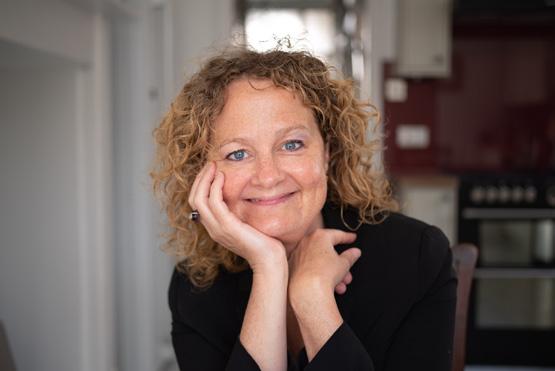
Your loved one on the autism spectru Develops their interactive attention span Don't you wish there was a "magic" form for activities and games that... actually wants to participate in? and socialization? There is! Designed around common special interests enjoyed by autistic people, this book includes over 180 activities for families to do together to help strengthen relationships and develop social skills. Kate shows how seven magic ingredients for optimal game-playing can be applied to a range of themes, from trains and planes to household appliances, the human body to animals and insects, TV and film characters, and what's more, how you can introduce your loved one's favorite topics. She shares "Presto Chango" beliefs - the five mindsets you need to power activities - as well as how to understand the magic of timing and knowing when to start and stop an activity based on your loved one's cues. T O P U R C H A S E O N A M A Z O N h t t p s : / / a m z n . t o / 3 j C 8 6 h u Exceptional Needs Today | Issue 11 | 13 PARENTAL SUPPORT
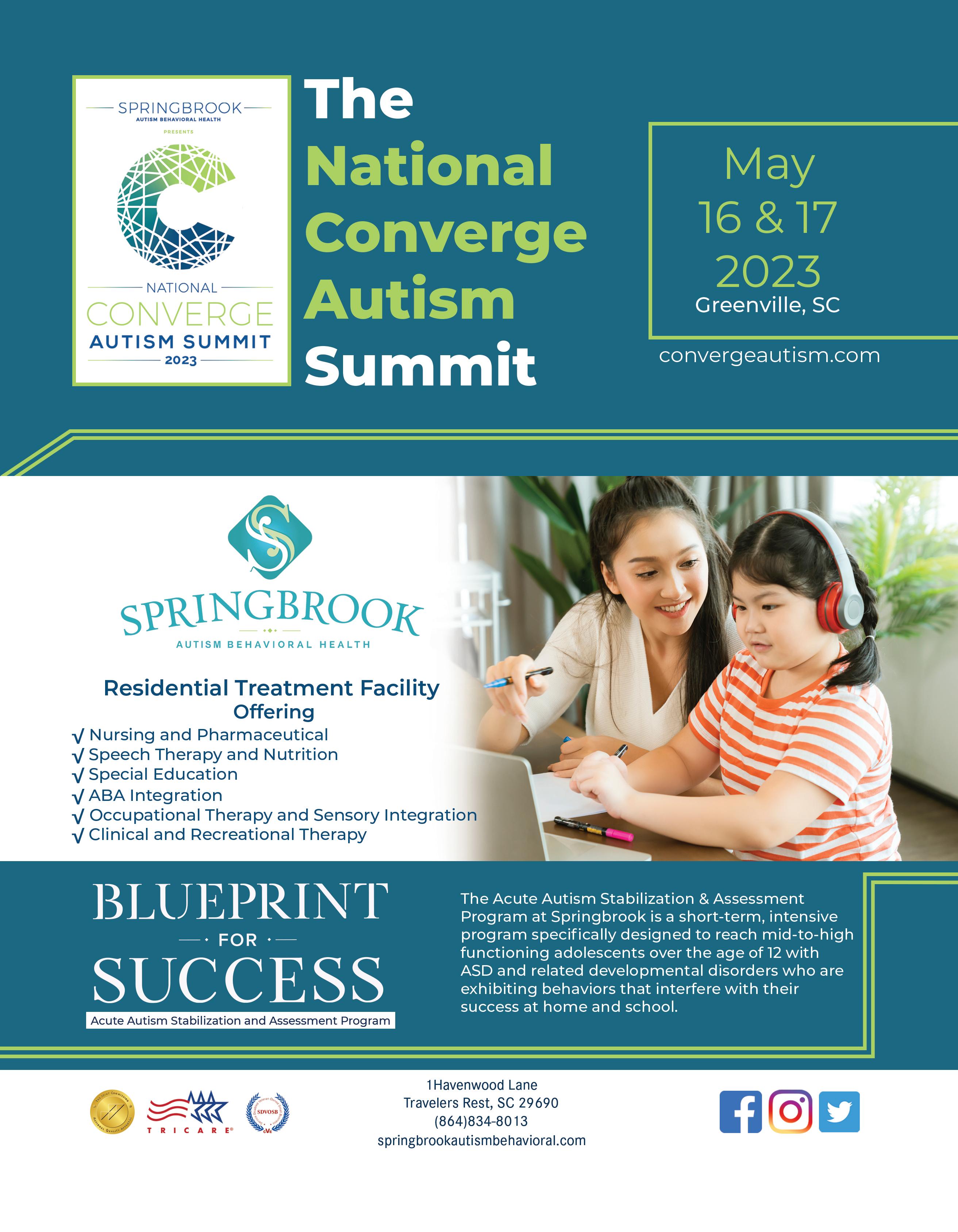
Understanding Masking and Its Impact on Social-Emotional Development
 By Dr. Chris Abildgaard, EdD, LPC, NCSP, NCC
By Dr. Chris Abildgaard, EdD, LPC, NCSP, NCC
AS WE CONTINUE TO ACCLIMATE OURSELVES, OUR STUDENTS, AND OUR CHILDREN TO THIS “POST” COVID-19 WORLD, WE ARE FACED WITH NEW CHALLENGES WHEN THINKING ABOUT OUR EDUCATION SYSTEM, MENTAL HEALTH SUPPORTS, AND THE FAMILY UNIT. WE ARE ALL EMERGING FROM A TIME WHEN BALANCING LIFE, WORK, AND FAMILY WAS A DAILY JUGGLING ACT.
Exceptional Needs Today | Issue 11 | 15 BEHAVIORAL HEALTH
Between Google Meets, Google Classroom, and knowing our schedules and those of our kids, things became blurry. For many of us trying to keep up with the pace of life, we watched our children and clients through this unique lens. They were growing in a world unlike anything we have ever experienced before. Social isolation, stagnation, and, in some cases, feeling trapped within one set of walls for months made us all feel a little stir-crazy. We saw students do the best they could to keep up with the pace of instruction, but for many who require more direct and specific teaching, it was overwhelming.
In thinking about the impact COVID-19 had on our neurodiverse learners, we set out to learn more about their experiences and views on what worked and what didn’t during this time. But, before moving too far along, let’s set a general understanding of neurodiversity and the impact it should have on our thinking of mental health, education, and social justice.
The word neurodiversity refers to the diversity of all people, but it is often used in the context of autism spectrum disorder (ASD), as well as other neurological or developmental conditions such as ADHD or learning disabilities (Harvard Health, 2021). Judy Singer, an Australian sociologist, first described neurodiversity in 1997 as the idea that people experience and interact with the world around them in many ways; there is no one “right” way of thinking, learning, and behaving, and differences are not viewed as deficits (Harvard Health, 2021). It is becoming increasingly common for mainstream social institutions to acknowledge neurodivergence as a set of identities comparable to traditional forms of diversity, such as race, gender, and sexual orientation.
With this understanding and acknowledgment of a person’s strengths and barriers, we set out to uncover some experiences of our neurodiverse population in relation to their day-to-day activities and mental health over the past two years. What we discovered through clinical interviews is that many believe “it was not too bad.” Young people could use technology at their leisure, school was not as long, and this new world of “online friendships and groups” exploded in so many different directions.

It was encouraging to see individuals, especially those with a neurodiverse learning profile, figure out how to make this new system work for them to some degree. Many clients have told us that “while people had to wear ‘masks’ during the pandemic, we got to take ours off for the first time.” As educators, mental health professionals, and parents, we owe it to our students, clients, and children to reflect on
the “masks” they are talking about and propose courses of action, so they don’t feel as forced to “mask up” in ways that impact their self-identify and emotional well-being.
The term “masking” has appeared in mainstream social media and our neurodiverse population over the past ten years. Prior to 2021, this emotional defense mechanism certainly existed, yet no platform was established to allow for such open discussions about this topic.
Masking refers to the process in which people change or mask their natural personality to conform to social norms or conventional “expected behaviors.” More recent literature has described it as evolving to conceal one’s emotion by portraying another emotion (Pelton & Cassidy, 2017). This idea that students feel the need to mask, whether it be from teachers, parents, or peers, is concerning and adds to
16 | Exceptional Needs Today | Issue 11 BEHAVIORAL HEALTH
the growing elevated rates of mental health conditions such as depression and anxiety among autistic people (Lever & Geurts, 2016). Studies have also identified that the internal need to engage in masking or camouflaging perceived deficits (i.e., hiding or suppressing “unnatural” traits) for neurodivergent individuals places them at a higher risk for suicidality above and beyond other predictors such as employment status and gender identity (or assigned sex at birth in some research) (Cassidy et al., 2018).
As a society, we cannot blame COVID-19, as this time in our history did not create a new feeling of needing to hide, suppress, or “mask” one’s deficits; if anything, it gave some relief to those doing so. For us in the mental health and education fields, these feelings many of our neurodiverse clients struggle with were brought to the forefront of our thinking. COVID-19 brought about a clearer picture in terms of our inequities, possible implicit biases, and the need to reconceptualize how we understand the social-emotional brains of our neurodiverse population.
In this brief commentary, I would like to propose that with this shift in masks coming down (and yet going back on for others), we as a helping community, need to work with our clients to revisit those competencies—they need to be successful in the social world. Furthermore, how can we help them adapt back to this world that assumes you need/want to be social with others? In this brief commentary, I would like to propose that with this shift in masks coming off (and yet going back on for others), we invite this conversation around neurodiversity and social expectations within this “post” COVID world. I will examine just our social world for now, yet this is a social issue that needs to be talked about at greater length both now and in the coming years.
Ask what being social means to some
What socializing may mean to some may differ totally from the perspective of a neurodiverse individual. Keep in mind that the amount of cognitive and emotional energy we expend on keeping pace with social norms is enormous. If we are going to put out that much energy, how do we determine how much we need to get back? In other words, what makes being social worth it for someone who has struggled socially, especially during face-to-face interactions? Having a conversation about the energy level needed to be social is essential for us to have with others. We cannot assume our neurodiverse learners are OK with expending that much energy day in and day out. What is the social payback? That is an important topic to discuss and be open to learning more about.
Social motivation and hopelessness
Recent research talked about this idea of neurodiverse people feeling hopeless when it comes to having “success,” friendships, relationships, or a steady job. Many of our clients have the motivation to be around people and meet those who share similar interests. However, there comes the point when they internally start to weigh if it’s worth it; if things will not differ from last time. Many clients will say something like, “Well, I tried at a relationship once, and it failed; who is to say it will be different now?” Coupled with
a perception that “neurotypical” people don’t understand and they are the only ones muddling through life feeling this way, many of our neurodiverse clients experience pressure to expend energy hiding parts of themselves away. They end up masking because they are ashamed, don’t want to deal with another social failure, or believe they must fake things to blend in so people will like them.
How did we, as a society, move in a direction that made people who see the world just a little differently than the majority feel like such strangers to life? These feelings are real, and as educators, mental health professionals, and parents, we must validate these sensations and emotions that our clients and children today are experiencing. Remind them they are not alone and can talk to you with no judgment. People who regularly mask need to know they are not the only ones who do it. The truth is, we all wear a mask from time to time. It can be easier than facing rejection for not conforming. Bringing a humanistic quality to masking is vital to the mental health of those needing to keep their mask close by.
As a society, we are seeing a rise in depressed and anxious children and adults. Although we can give 100 reasons why this rise in mental health needs exists, there is only one thing that really matters: being prepared to speak with our clients/children/students as to why. I encourage families I work with NOT to start by asking, “Why are you always so anxious?” Instead, talk first about YOUR feelings. Talk about your anxious moments. Talk about the days you didn’t feel like getting out of bed or when you felt overwhelmed by life; we have all been there.
If you want to encourage an honest conversation, it is important to signal your empathy and candor. It’s about not being afraid to hear the things we dread hearing. It’s about allowing our people to say what they need to so that, over time, a plan can be created to support people the way THEY need to be supported. It’s about helping people lower the mask just a little bit…just enough to breathe…and to know they are not alone. Masking is a real thing for so many people; age doesn’t matter. Let’s do a better job with acknowledging people’s neurodiversity. Let’s get better about inviting those conversations about why we might wear masks. Then, we can take informed steps toward making one’s social-emotional life a little better.
Exceptional Needs Today | Issue 11 | 17 BEHAVIORAL HEALTH
Bringing a humanistic quality to masking is vital to the mental health of those feeling the need to keep their mask close by.
Resources
Lever, A. G., & Geurts, H. M. (2016). Psychiatric co-occurring symptoms and disorders in young, middle-aged, and older adults with autism spectrum disorder. Journal of Autism and Developmental Disorders, 46(6), 1916-1930. https://doi.org/10.1007/s10803-016-2722-8
Pelton, M. K., & Cassidy, S. A. (2017). Are autistic traits associated with suicidality? A test of the interpersonal-psychological theory of suicide in a non-clinical young adult sample. Autism Research, 10(11), 1891-1904. https://doi.org/10.1002/aur.1828
Raypole, C. (2020, July 30). It’s Tempting to Mask Your Emotions, but It Won’t Do You (or Anyone Else) Any Favors. Healthline. https:// www.healthline.com/health/mental-health/hiding-feelings


Baumer, N. (2021, November 23). What is Neurodiversity? Harvard Health Publishing. https://www.health.harvard.edu/blog/ what-is-neurodiversity-202111232645
Dr. Chris Abildgaard, EdD, NCSP, LPC, NCC, is the owner and director of the Social Learning Center, LLC, located in Cheshire, Connecticut. He has been in private practice for over 13 years. Chris earned his Doctorate of Education in School Psychology from Loyola University Chicago. He is a nationally certified school psychologist, a boardcertified national counselor, and a licensed professional counselor with a specialization in autism spectrum disorders.

Chris also holds a graduate certificate from the University of Massachusetts Lowell in behavioral interventions in autism.
Chris is an adjunct professor at the University of St. Joseph’s and the University of Hartford, both located in West Hartford, Connecticut.
Website: https://www.sociallearningcenter.org/ Facebook: https://www.facebook.com/SocialLearningCenter Twitter: https://twitter.com/SLC545 LinkedIn: https://www.linkedin.com/in/chrisabildgaardslc/

P r o g r a m s f o r Y o u t h w i t h L e a r n i n g D i f f e r e n c e s B U I L D I N G S E L F C O N F I D E N C E A N D S O C I A L S K I L L S T H R O U G H S A I L I N G ! A n n a p o l i s , M D D a y C a m p J u n e 1 9 J u n e 3 0 J u l y 3 — J u l y 1 4 S t M a r y ’ s , M D O v e r n i g h t C a m p J u l y 1 7 J u l y 2 2 J u l y 2 4 J u l y 2 9 info@brendansailing.org 443-995-6375 w w w . b r e n d a n s a i l i n g . o r g R E G I S T E R N O W F O R 2 0 2 3 ! S C H O L A R S H I P S A V A I L A B L E 18 | Exceptional Needs Today | Issue 11 BEHAVIORAL HEALTH
JakeNavigatingBuchnat: the Workforce With Exceptional Needs
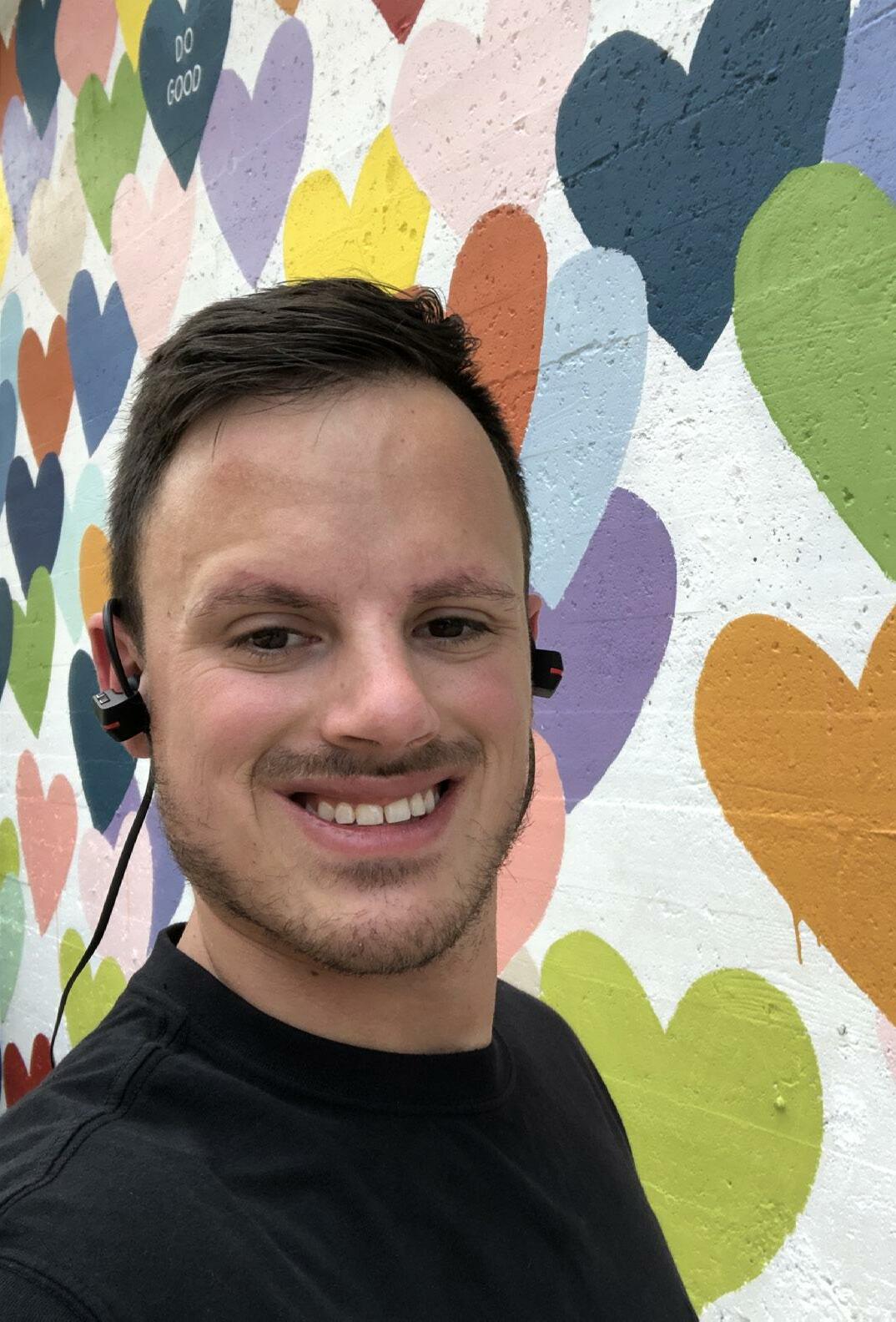
 By Margo Marie McManus
By Margo Marie McManus
Jake was 12 years old when he was diagnosed with Asperger’s syndrome, now called autism spectrum disorder (ASD). “I think my family knew I had something—I had a tic disorder—but I didn’t know what ASD was at that point,” he recalled. Things changed little following his diagnosis aside from being put on medication to help him manage some of his tics.
Jake grew up in the Chicago area and attended small Catholic private academies through middle school. There were few accommodations available for students, but he did not feel the need for assistance in academics outside of reading comprehension. He warmly remembered an eighth-grade English teacher who understood that not everyone has an aptitude for reading: “She basically held office hours just for me so we could review the chapter of the book we were reading.” Higher education was always in Jake’s life plan, and his rigorous high school left him feeling prepared for college-level courses.
Jake attended Bradley University and majored in Management Information Systems (MIS). He admits to having a “rough freshman year.” He initially declared computer science as his field of study, something he feels many people on the spectrum are intentionally pushed toward, even when there might be better options. The dominance of the Greek scene overwhelmed him in the school’s social structure. However, after meeting members of a fraternity who were all MIS majors, Jake realized he wanted to change his to match: “I hadn’t known that major existed before, but I liked the business part of it.” So, Jake switched to MIS where he could earn a business degree and still retain all the credits earned for programming. He also joined the fraternity, which he says served as the door
Exceptional Needs Today | Issue 11 | 19
that really changed his life socially, allowing him to enjoy the next two and a half years nurturing new friendships.
In 2018, Jake was delighted to land his first-ever internship, especially as he’d experienced difficulty when it came to participating in job interviews. Jake had a few previous work experiences, including time as a golf caddy. While he wasn’t too fond of the job, he worked competently. But unfortunately, when Jake searched for employment, he encountered the popular misconception that he was incapable of performing well just because he had autism.

Despite knowing he had just as much to offer potential employers as anyone else, his struggles with job interviews contributed to the feeling that maybe he was falling into the damaging stereotype. For example, when an interviewer asked him to talk about himself, Jake says he was confused about whether to focus on his assets from a work perspective or share more personal information. He also felt he rarely knew if he gave a good first impression and believed his stutter and occasional difficulty forming sentences on the spot detracted from his appeal as a job candidate.
When Jake was chosen for his internship with Verizon Connect in Rolling Meadows, IL, he attributed his successful interview experience to two major things: useful, applicable practice and networking. As part of a business fraternity, Jake was able to participate in an event where practice interviews were conducted. He found the feedback and the chance to test himself invaluable. Then, in his junior year, Jake was invited to attend a conference in Kansas City, where he took part in a workshop on resume building. It gave him a list of words to use to boost his best qualities on a resume, and he still uses them today.
Jake took his internship by storm, putting out whatever mini fires popped up in his workday and doing his job admirably. He impressed the customer success manager and formed a useful connection with her; they are still in contact years later. He is certain his relationship with his supervisor, who thought he was “very professional throughout the internship and performed all my duties and tasks, like, per specifications,” was essential to his later hiring into a full-time position. He also met another individual during his internship who helped convince Jake to move to Charlotte, NC, where he began working as a full-fledged Verizon employee.
Initially, Jake hid his autism from everyone at Verizon except his supervisor and Human Resources (HR). For all three months of the internship, Jake masked his neurodivergence, but once he moved into his full-time role, he knew keeping that up forever wasn’t feasible. He needed to interact with many sales managers, lead calls in one-on-one meetings, and allow room for others to give him feedback he might not be prepared to hear. These kinds of social interaction are some of the most challenging aspects of his job, and it would eventually lead to a slip-up in his masking. He also sometimes struggles with his self-esteem and confidence in his position. “Being autistic in my job definitely makes it a lot harder. I feel like I have to work twice as hard to get the results other people on my team can just do naturally,” he stated. But it wasn’t until he was inspired by a coworker that he decided to reveal his diagnosis on his own terms.
With the help of the Black Originators, Leaders, and Doers (BOLD) and Employee Resource Group (ERG), this coworker shared a lot about herself and what she was doing to help others in the ERG learn about their ancestry. She did so in an email
20 | Exceptional Needs Today | Issue 11 EXCEPTIONAL ADVOCATE
to her entire team and received praise for her efforts. Jake realized he could do the same and gain respect from the company as well. So, on National Autism Acceptance Day in 2020, Jake emailed his entire team revealing his diagnosis. It went even better than he was hoping: “And I got praise; it even went up to, like, I believe, a senior director who reported directly to the Vice President of [the] rising business group.”
Now, Jake dreams of a promotion to an HR role. “Like, diversity, equity, inclusion analytics. That’s kind of what motivated me. That’s kind of what pushed me towards the HR direction,” he said, “and I feel like I have a lot to offer from an HR position.” He’s currently part of the advanced ERG, which is the employee resource group for people with disabilities, and has led several presentations, including one where the ERG compared the coming out experience as a disabled individual to that of someone in the LGBTQ+ community, in which he worked with the coworker who inspired his own coming out.
Jake also has ideas for other presentations, such as how to make jobs and job interviews more accessible to candidates with exceptional needs, that would be given during Disability Pride Month. In addition to advocating for better methods of encouraging and employing the exceptional needs workforce, Jake believes those already working must remember it’s OK to
ask for help and that doing so does not mean they are incapable: “That’s something I’ve been struggling to teach myself because I feel like it’s, like, a person with the same job and same, like, pay level as me, if I have to ask them for help, it makes me feel like it’s going to look negative on me. Like, why do you have the same job as me, but I don’t know how to do this part of it? But it needs to be done if we ever want to grow or be promoted.”
Jake Buchnat can be reached at @jbuch01 on Instagram.
Margo Marie McManus is an editorial assistant for Exceptional Needs Today. She graduated from Clemson University in 2021 with a degree in Graphic Communications. Her interest in the exceptional needs community and autism awareness was first piqued when assisting students in the Writing Lab as a consultant. She furthered her interest by interning and writing articles for Autism Parenting Magazine and Exceptional Needs Today. She enjoys reading and writing poetry and has over 15 poems published in various magazines and anthologies, including Teenage Wasteland Review and The Chronicle. She’s also a big fan of cats.
Images courtesy of Jessica Bonardi from Inside Verizon
possibilities for language use are endless! It allows us to use the sense of smell, which is something I've never been able to use in speech therapy prior. We can target things such as using a communication device or generating higher level writing activities which has been an exciting way to meet goals!

Heather Palazzo, Speech Pathologist, MS CCC SLP, New Orleans, LA

The Scent Guru Group, LLC www.thescentgurugroup.com MindScent® Smell. Discover. Connect. AN INNOVATIVE MULTI-SENSORY TOOL FOR SLPS, EDUCATORS & FAMILIES The
Essential Smells© include: Apple, Bread, Campfire, Chocolate, Cinnamon, Coffee, Donuts, Grass, Lavender, Maple Syrup, Mint, Orange, Pine, Pineapple, Popcorn, Rose, Rosemary, Strawberry, Vanilla and Watermelon. Each 0.5ml. roller ball will last approximately 1000 swipes MADE IN USA Exceptional Needs Today | Issue 11 | 21 EXCEPTIONAL ADVOCATE
Putting It Bluntly:
We Need to Teach Autistic (And Other Neurodivergent) Girls About Sexuality
 By Marcia Eckerd, PhD
By Marcia Eckerd, PhD
IT CAN BE HARD FOR PARENTS TO RAISE THE SUBJECT OF SEXUALITY WITH YOUNG AUTISTIC CHILDREN OR EVEN PRETEENS. SO WE FOCUS ON OTHER NEEDS WHICH SEEM MORE IMMEDIATE AND CRITICAL. WE MIGHT AVOID THE CONVERSATION ALTOGETHER BECAUSE WE’RE UNCOMFORTABLE TALKING ABOUT IT. THIS ARTICLE INCLUDES RESOURCES TO HELP.
22 | Exceptional Needs Today | Issue 11 SKILLS FOR LIFE
We may think our autistic children don’t seem interested or that if we talk about it, we’ll create an interest that wasn’t there. However, research shows autistic teens are as interested in romantic relationships as their neurotypical counterparts (Joyal et al., 2021), but due to misinformed stereotypes, we may think they’re less sexual and, therefore, at less risk of relationship abuse.
There’s a vital need for autistic children to be informed to be safe. Research specific to females is limited, but based on a Swedish study, by the age of 18, autistic females are three times more likely to have experienced sexual victimization compared to the general population. Girls with ADHD had a doubled risk (Joyal et al., 2021). As teens and young adults, autistic women perceived to have the lowest percentage of autistic traits (who mask well) were more likely to be sexually abused, likely because they were more likely to be in relationships (Roberts et al., 2015).
In my interviews, one woman told me she didn’t understand what was happening to her was abuse because it wasn’t exactly what she had been warned about. Another woman didn’t understand that she was allowed to say “No.”
Autistic girls (and boys) receive less sexual education in school than neurotypical peers, either because they’re pulled out of health class or because they are confused by discussions of feelings and relationships. Research shows that autistic children are less likely than neurotypical peers to get sexual information from parents and teachers (Brown-Lavoie et al., 2014). If they get information online or from watching TV and social media, what they see is unrealistic and exaggerated (Joyal et al., 2021, Brown-Lavoie et al., 2014). Autistic teens report having knowledge of the sexual language but lack actual knowledge, increasing the risk of victimization (Brown-Lavoie et al., 2014).
Girls are at particular risk of abuse because society expects girls to be “people pleasers;” they are taught to conform and do what they’re told (LA Concierge Psychologist). Their desire to be in a relationship or through peer pressure can cause their vulnerability. Neurodivergent girls are more likely isolated or naïve and lack the kind of information commonly shared among a friend group about sexuality. This combination of the normal desire for a relationship, naïvete, and lack of experience is a perfect setup for being abused.
Teens and young adults may assume this is how friendship works (Pearson et al., 2022, Reis et al., 2022). They might be easily gaslit, told their discomfort is their own fault, or that they had consented to sex because they came to a compromising situation, like being alone in someone’s apartment. Many autistic individuals are alexithymic—they don’t recognize or can’t describe feelings—so they don’t have a “gut” sense of unease.
In my experience, some young women, and particularly neuro-
divergent women, use alcohol or drugs to lower social anxiety so they can go to parties and find a partner. Wanting a meaningful romantic partner, they don’t realize that having sex isn’t the same as being valued as a person. Also, if their judgment is compromised, they’re less likely to make good decisions.
Education in sexuality must begin when children are young— sexuality impacts life from birth in how children are treated and what is expected of them. Young children need to learn about physical boundaries and their right to say “No.” Often, we pressure unwilling young children to accept kisses and hugs from family members, for example, which can be confusing. Children who are literal and concrete need clear ideas about what a boundary is and that it’s their right to define what they want.
Puberty is confusing to all developing children. For those who have difficulty with change, it can be particularly difficult, especially since it’s unpredictable and requires differences in hy-

Exceptional Needs Today | Issue 11 | 23 SKILLS FOR LIFE
giene, the use of new products, or clothing that might present sensory challenges. In addition, they may experience sexual bullying in response to their changing bodies.
Discussions of sexuality can be embarrassing. I had one college-age client ask me exactly how one French kissed. At no time in my training was this covered, but I did my best to explain and answer his questions. It’s important for a parent or educator to ask questions about what a child or teen knows—it’s the only way to identify misinformation. We need to validate that all questions are good ones and be open and honest. Our answers need to be clear, concrete, and logical— not just “how” but “why.”
Suppose we’ve encouraged open dialogues with trusted adults from a young age. In that case, it will be easier for a teen or young woman to seek guidance from a parent, friend of the family, relative, sibling, or therapist. We must share with our daughters that we also had a challenging path of learning to navigate sexuality, and it’s an important subject worthy of seeking more information and guidance.
Resources
Luckily, there are excellent resources for helping parents and girls of all ages. If sexuality is an open subject for discussion with young children, it’s easier to continue discussions as they age.
Amaze Parents has a series of YouTube videos on talking to younger children about sexuality, bodies, consent, and other subjects.
Amaze Jr. Parents has excellent videos: https://amaze.org/myamaze/amaze-jr-108/
Amaze.org has videos for older children on subjects from puberty to STDs: https://amaze.org/ (#moreinforlessweird)
Kids Health has a good video on girls and puberty called “Am I Normal?” https://youtu.be/FKHHjIVpuB8 with a similar video for boys.
The Organization for Autism Research (OAR) has an excellent online resource, “Sex Ed for Self-Advocates,” with a section to be read by parents or educators and a section with material for children of all ages on everything from public vs. private to puberty to dating 101, sexual orientation, and gender identity to issues about sexual activity at https://researchautism.org/sex-e..d-guide/
Books can be helpful:
• Sonya Renee Taylor: Celebrate Your Body (And Its Changes, Too!): The Ultimate Puberty Book for Girls
• Dr. Lisa Klein & Dr. Carrie Leff: Celebrate Your Body 2: The Ultimate Puberty Book for Preteen and Teen Girls
• Sarah Attwood: Making Sense of Sex: A Forthright Guide to Puberty, Sex, and Relationships for People with Asperger’s Syndrome
• Liane Holliday Wiley: Safety Skills for Aspergers Women: How to Save a Perfectly Good Female Life
References
Brown-Lavoie, S. M., Viecili, M. A., & Weiss, J. A. (2014) Sexual knowledge and victimization in adults with autism spectrum disorders. Journal of Autism and Developmental Disorders, 44(9), 2185–2196. https://doi.org/10.1007/s10803-014-2093-y
Joyal, C. C., Carpentier, J., McKinnon, S., Normand, C. L., & Poulin, M. H. (2021). Sexual knowledge, desires, and experience of adolescents and young adults with an autism spectrum disorder: An exploratory study. Frontiers in Psychiatry, 12, 685256. https://doi.org/10.3389/fpsyt.2021.685256
LA Concierge Psychologist. The dangers of dating as an autistic woman. https://laconciergepsychologist.com/blog/dangers-of-dating-as-autistic-woman/
Gotby, V., Lichtenstein, P., Langstrom, N. & Peterson, R. (2018) Childhood Neurodevelopmental Disorders and Risk of Coercive Sexual Victimization in Childhood and Adolescence - A Population-Based Perspective Twin Study Journal of Child Psychology and Psychiatry 59:9
Pearson, A., Rees, J., & Forster, S. (2022). “This was just how this friendship worked”: Experiences of interpersonal victimization among autistic adults. Autism in Adulthood, 4(2), 141-150. http://doi. org/10.1089/aut.2021.0035
Roberts, A. L., Koenen, K. C., Lyall, K., Robinson, E. B. & Weisskopf, M. G. (2015). Association of autistic traits in adulthood with childhood abuse, interpersonal victimization, and posttraumatic stress. Child Abuse & Neglect, 45, 135–142. https://doi.org/10.1016/j.chiabu.2015.04.010
Marcia Eckerd, PhD is a licensed psychologist with over 30 years’ experience. As a therapist and provider of neuropsychological evaluations, she identified and worked with many children with autism, Non-Verbal learning disability (NVLD), ADHD, and other LDs. She serves on the CT Autism Spectrum Disorder Advisory Council and the professional advisory boards of SmartKidsWithLD and NeuroClastic.com, a nonprofit providing creative educational resources on autism. She has a regular blog on Psychology Today, “Everyday Neurodiversity,” as well as writing professional articles on autism and articles for multiple websites and magazines on NVLD, autism, evaluations, and executive functions, such as SmartKidsWithLD.org, Autism Parenting Magazine, and Thinking Person’s Guide to Autism. She’s spoken extensively on autism and NVLD in national conferences for educators, clinical professionals, and parents. A former Director of Clinical Programs at the New Learning Therapy Center, she also helped establish the Norwalk Hospital-Yale collaboration Pediatric Development and Therapy Center. She continues to be on the Associate Medical Staff at Norwalk Hospital.

24 | Exceptional Needs Today | Issue 11 SKILLS FOR LIFE
Bankability is a Revolutionary Virtual Banking System Specifically for Students with Autism
Digitability has officially launched Bankability, the first virtual banking system for students with cognitive disabilities.
Bankability transforms life-skills training for special education classrooms and enables students to experience a modern banking app while learning financial literacy and workplace behavior in a way never done before.

Bankability works with Digitability’s evidence-based workplace behavior training model, “The Social Economy,” where students earn (and later spend) virtual money for practicing workplace behavior. With the addition of Bankability, students now receive direct deposits on payday, review pay stubs and personal bank statements.
Bankability also allows teachers to track workplace readiness progress using Digitability’s IEP Transition Goal Bank. Assigning each dollar to a behavior allows teachers to track behavior over time. Reports can be generated at the click of a button and shared with their Special Education Team.

Founder and CEO Michele McKeone, MEd described the inspiration for Bankability. “In all my conversations with teachers, I heard repeatedly that they have lesson plans about balancing a checkbook...something almost no one does now that everyone is banking online. Others tried creating their own digital banking systems but hit barriers with limited time to plan, organize and manage all of the data needed to be in compliance with IDEA. I thought, ‘Why hasn’t anyone made this yet?’ Well, now we have, and teachers love it.”
New Jersey Language Learning Disability teacher Russell Schwartz has been using Bankability since January 2021. “Students are
motivated to participate in lessons. They get excited to see their earnings in their accounts on payday. They also enjoy having the ability to make purchases online right from their account. I like the convenience of setting up bills and purchases one time, so they have access to those features right away.”
Teachers’ input has been crucial to Bankability’s success. “Everything we do at Digitability is not only designed to have the greatest impact on student outcomes but also to make life just a little bit easier for special education teachers. That’s why we designed Bankability to teach not only financial literacy but also streamline everything a teacher needs to include in their IEP and progress monitoring process—with just a click of a button. It’s that easy.”
To find out how you can bring this revolutionary system to your school or organization, visit www.Digitability.com.
ADVERTISEMENT Exceptional Needs Today | Issue 11 | 25
SAFETY GOALS WITH
NICOLE Teaching Life and Safety Skills to Children With Disabilities
By Nicole Moehring
REDUCING THE RISK OF ABUSE WITH CHILDREN WITH DISABILITY


CHILDREN WITH DISABILITIES OFTEN NEED ADDITIONAL ASSISTANCE AND LEARNING TECHNIQUES TO DEVELOP LIFE SKILLS. LEARNING OPPORTUNITIES ARE NEEDED TO PROVIDE CHILDREN WITH SKILLS THEY WILL REQUIRE TO FUNCTION IN EVERYDAY LIFE. THESE ARE REFERRED TO AS ACTIVITIES FOR DAILY LIVING (ADLS). 26 | Exceptional Needs Today | Issue 11
The kind of life skills to be taught depend on the child’s age and ability to perform specific tasks. It’s important for children to learn basic life skills and how to be independent if they are able. Such skills could include making a sandwich, doing laundry, making their bed, watering plants, creating a grocery list, or shopping for groceries.
Everyone needs to have certain self-care skills to get through the day. Skills such as dressing, personal hygiene, and eating can be vital to being somewhat independent. Children learn life skills in school; however, it is important for parents also to teach life skills at home. This not only provides more instruction for the child; it also allows the child to practice these skills in their environment. Children with developmental disabilities are often naïve, allowing them to be vulnerable. In addition, they often lack understanding of social cues and have many challenges with communication, potentially threatening their personal safety.
Parents and guardians face the difficult task of not only teaching life skills to encourage independence but also making sure children are protected from intentional and accidental harm.
Four crucial life and safety skills to teach children with disabilities include:
1. Self-care
Teach specific daily self-care tasks such as showering, taking medications, or brushing teeth. When teaching self-care, it’s essential to use a visual schedule, breaking down each task if needed. It’s also important to model the task for the child. Many children learn better by watching a job be performed. Then, repeat the task until your child understands and can complete it independently.
2. Household tasks
Teach skills like doing laundry, light cleaning, and cooking. Practicing these skills is an excellent way to have children get involved in the home and gain independence. There are many safety issues involved in these tasks, so reviewing safety protocols and plans is essential. For example, you may need to explain how a wet floor can be dangerous or how a knife could hurt someone. Modeling chores and providing multi-step tasks can help reduce these risks.

3. Communication online and at home
Teach internet safety and security for all devices, which is imperative nowadays. Addressing how to send an email and text message properly and what can be received is so important. Many software programs are available now that allow certain internet sites not to be accessed. The parent has control and will receive notifications if access to those sites is attempted. It’s also important to teach a child with disabilities how to answer a phone and the door properly. This
provides more safety for your home. If your child is home alone, it is never a good idea for your child to let anyone know there is no one with them. That makes them more vulnerable to dangerous situations.
4. Around the community
Role-playing in the community is so important. Be sure to consider instances such as if a child were to get lost and how you and the child would handle the situation. Conduct “mock” situations. Be sure to let people like a store manager know what you are doing and what you are trying to accomplish at your location. Explain to your child that this is a practice drill to train them in the event something would ever happen. This will help them be prepared should one of your scenarios actually occur. Social stories are another great way for a child to understand potential situations. You and your child can also go over the social story multiple times, allowing for questions and answers.
Exceptional Needs Today | Issue 11 | 27 SAFETY STRATEGIES
Nicole Moehring’s daughter and son, who has Fragile X Syndrome and autism, were both victims of sexual abuse. As a mother suffering through this unbelievable nightmare, Nicole witnessed extreme differences in the justice system of how her daughter was believed and treated well when her son was not. She also quickly recognized the distinct differences in recovery, trying to find support, and resources. Nicole and her daughter Maci founded Voices of Change 2018 (VOC18), a nonprofit organization, to begin making much needed change for children with disabilities and their families.

VOC18 is a national organization piloting their groundbreaking programs in Ohio. VOC18 is in the process of developing preventative education programs for children with disabilities while empowering parents and guardians. By sharing their lived experiences and through collaborations with other individuals, mental health professionals, law enforcement, and organizations, they are building a foundation of advocacy, abuse awareness, resources, and supports for children with disabilities.

Website: www.voicesofchange2018.org
Facebook: https://www.facebook.com/voicesofchange2018/ LinkedIn: https://www.linkedin.com/company/voices-of-change-2018/ Pinterest: https://www.pinterest.com/voicesofchange2018/_created/ Email: info@voicesofchange2018.com
28 | Exceptional Needs Today | Issue 11 SAFETY STRATEGIES
Girls Just Wanna Know How to Make Friends
By Karen Kaplan
I recently returned to an area I had been away from for over 20 years and decided to relearn my way around by checking out all the independent bookstores. During one of my stops, I picked up a book entitled Friendships Don’t Just Happen! : The Guide to Creating a Meaningful Circle of GirlFriends . The author is Shasta Nelson, who founded Girlfriend and Girlfriend Circles. I took the book home, thinking it might provide suggestions on ways to make new friends and connect with past ones. But as I read its pages, it hit me that this book would be perfect for girls, teens, ladies, or women on the autism spectrum. Wow!
From the very first pages, I agreed with the author. I, like the author states, am outgoing and have had some long-
term friendships, but suddenly, I was in a new city without a group of friends with whom to connect. So, I needed some extra wisdom on how to connect again. I did not want to feel alone.
I am sharing some of the wisdom I gained from the book in hopes it will inspire teachers, speech therapists, parents, self-advocates, and others committed to helping women on the spectrum develop friendships. So, if someone you know has some sense of loneliness or not feeling connected, perhaps some of these thoughts and ideas could help.
1. Having friends brings happiness. These connections help us develop better health and success in our lives.

Exceptional Needs Today | Issue 11 | 29 SKILLS FOR LIFE
So, find research articles on the subject and perhaps share them. Especially if your friend is anxious about forming friendships or questions the purpose, show her the research that says supportive friendships apparently lower our stress, help us reach our goals, and may even prevent disease.

2. Please ensure you communicate that making friends is not always easy. Developing friendships takes time.
3. Point out there are different kinds of friends. Perhaps make a list of your very own friends and talk about how each is a different kind of friend (see point four and five). For example, some friends we spend time with because of shared interests; perhaps they attend classes with us, or we see them in church or at the gym. Shasta Nelson says we can define them as contact Friends or community friends once we spend more time with them.
4. Common friends develop out of our contact friends. Maybe someone taking a class or we see at the gym or church asks us to have a drink before or after or share a meal afterward. We begin to share more of ourselves with these common friends. We feel more connected to these women.
5. Then there are committed friends. We share our feelings with them. We make time for these women in our lives. They are in our daily lives. These friends remain consistent, no matter what. They are the highest level of friendships. We can also have confirmed friends with whom we share a history, but the connection is inconsistent. They are not in our daily lives.
6. Perhaps it could help if you developed a social story about the different types of friends, read it with them, and have a conversation about the story.
7. Then, try to identify whether your individual feels alone. Are they sitting alone every night watching videos, playing games on the screen, or reading book after book? Are they sad or depressed? Do they feel left out? Talk about the idea of developing friendships.
8. Shasta Nelson believes we must develop “frientimacy.” This is when we establish consistent intimacy with someone. She discusses her five stages of frientimacy. Curiosity is the first. Our shared interests, enthusiasm, and curiosities lead us to potential friends. Exploration is the next. We commit to spending time with the person. We must show up consistently. Familiarity is third. It takes time to become comfortable with someone. This takes us sharing our thoughts, feelings, and interests with one another. Next is vulnerability. We must be OK with connecting even when feeling sad, anxious, or frightened. We must be OK with making mistakes in front of this person. We must be willing to be imperfect with this person. “Frienintimacy” then arrives. This is when you trust the other person. Each listens to the other. This is when you
continue to show up/be there for the other person. This is when each celebrates the other.
9. Make a list with your individual of all their interests and curiosities. Then have them research local events that match their interests. Help them commit to saying yes to attending these events, parties, and gatherings so they can meet new people.
10. If your individual does not have a hobby, help them try to develop one from their list of interests. For example, if they enjoy reading, teach them to look for a book club to join.
30 | Exceptional Needs Today | Issue 11 SKILLS FOR LIFE
11. Talk to them about exploring whether their religious practices align with a center that hosts events. Encourage them to attend an event a few times to see how it feels and see the types of people who also attend.
12. Do any of their interests align with volunteering opportunities in their community? Here, they can meet other volunteers with similar interests and develop some common friendships.
13. If your individual has a dog, perhaps heading to a dog park to meet other owners of animals could inspire a friendship. But, once again, be sure they go to the park often to see people using it more consistently.
14. If your individual enjoys a specific topic, taking a class or workshop surrounding that focus can open doors to friendships.

15. Perhaps your individual has never met her neighbors. Maybe you might support her in making cookies or holiday bread and taking it over to the neighbors. Help her make an introduction. Later she might do a backyard neighbor gathering and get to know what interests her neighbors might have. Friendships could develop from neighborhood get-togethers.
16. My favorite is finding the perfect coffee house to frequent. I repeatedly find that if I go to my local coffee house at least three days a week, I see others who love the café and consistently stay and read, write, or work on a computer. Eventually, our eyes meet, hellos start, and discussions about what someone is reading, writing or attending to on the computer develop. Eventually, stories about who they are and who I am take place. The same can happen if you have a local bookstore that puts on reading nights. If your individual loves to read, then bookstore reading events could be another way to meet other book lovers and develop some common friends. Maybe they like to play bingo. Perhaps the church has a Bingo Night. Then, they can meet other bingo lovers.
So, if you are a girl who just wants to make friends, try some of the above recommendations.
Karen Kaplan is a native San Franciscan. She completed her bachelor’s and master’s degrees at Arizona State University, Tempe, Arizona, in speech pathology and audiology. She minored in special education and obtained her speech therapist and special education credentials in California. Karen worked as a speech therapist for both public schools and private schools for 20 years before opening her own residential and education program

for students with autism spectrum disorders. She worked in credential programs at Sacramento State University as well as UC Davis and spent 20 additional years directing private schools for those with autism and similar learning challenges. Karan founded a small non-profit, Offerings, which travels globally helping other cultures understand those with developmental challenges. For seven years, she founded and facilitated an autism lecture series and resource fair in Northern California. Karen still facilitates an Autism Awesomeness event yearly, showcasing the strengths and talents of those who live on the spectrum. She is currently consulting, helping families, schools, and centers for children, teens, and adults. She has published articles to help bring ideas and strategies to families and professionals, providing hope. Karen authored Reach Me Teach Me: A Public School Program for the Autistic Child; A Handbook for Teachers and Administrators in the early 70s and published her second book, On the Yellow Brick Road: My Search for Home and Hope for the Child with Autism , in 2017. Her third book, Typewriting to Heaven… and Back: Conversations with My Dad on Death, Afterlife and Living , is not about autism but about having important conversations with those we love. Be sure to connect with Karen— she is always ready to listen and think of the possibilities.
Website: www.karenkaplanasd.com
Exceptional Needs Today | Issue 11 | 31 SKILLS FOR LIFE

ValiantFutures.com off ice@valiantfutures.com 760-854-4003 • Who will care for my child when I’m gone? • How do we access and keep public benefits? • How much money will it take to support our child? WE STRIVE TO MAKE SMART FINANCIAL PLANNING ACCESSIBLE TO ALL FAMILIES.
SHAPING OUR FUTURE

Helping Children Manage Emotions During Stressful


Life Events
 By Rose Adams, OTD, OTR/L
By Rose Adams, OTD, OTR/L
Exceptional Needs Today | Issue 11 | 33
WHAT IS A SHIELD? A SHIELD REPRESENTS PROTECTION, USUALLY FROM ANTICIPATED OR EXPECTED EVENTS. I’D LIKE TO PROPOSE A DIFFERENT APPROACH FOR SHIELDS. RATHER THAN A MEANS OF PROTECTION FROM CERTAIN EVENTS, BEHIND THE SHIELD IS A CONCEPT I DESCRIBE AS CREATING A SAFE SPACE OR PROVIDING EMOTIONAL SUPPORT FOR CHILDREN TO “JUST BE” DURING EXPECTED OR ANTICIPATED LIFE STRESSORS AND EVENTS.
What types of events might produce feelings of stress or big reactions and emotions among young children? Some of these feelings and emotions may be related to social experiences such as birthday parties, family events, and holidays. Others might be related to change, such as transitioning from a preferred to a non-preferred activity or trying a new experience altogether. Whatever the event or situation, protection (support) will be needed when these emotions occur.
The backstory
A few years ago, one of my brothers got married. I come from a large family, so weddings are usually a big deal. Our twin boys, who were three years old at the time, were asked to be a part of the bridal party. I wasn’t sure if they were quite ready, but we figured we’d give it a try since they both agreed to participate. During the wedding rehearsal, I felt a sense of apprehension and perhaps a little bit of fear from them. I mean, who can blame them? It was going to be a long walk down the aisle in front of a large crowd. I assisted them with walking down the aisle during rehearsal and was prepared to do so on the wedding day. I assured them they would have each other and that I would be there if they needed me. On the day of the wedding, my husband and I gave them pep talks and reminded them of what they were both most looking forward to…the cake!
When it was our turn to walk, the doors opened. As we prepared to proceed down the aisle, I gave each of them my hands to hold. A few steps in, one of our boys used my hand to hide his face, and the other literally hid behind my dress the entire way down the aisle. It was a sight to see, but I just let them be. Our boys created a shield of protection from it all. Later, at the reception, I asked them, “Why did you hide behind my hand and dress?” Dave (David) said he felt shy, and Jojo (Joseph) said he didn’t want everyone looking at him. We validated their feelings and let them know how proud we felt.
How can we support our children in navigating stressful life events? First, we can be their shields. Here are three ways to support young children behind the shield: validate their feelings, provide support, and help prepare them for future events.
1. Validate feelings
Adults have feelings, and so do children. I find children
can have very big feelings about things we, as adults, may have learned to manage or regulate. I consider myself to be emotionally expressive. I express my feelings both verbally and through my face. I am the “wear your emotions on your sleeves” type, and I am OK with it. One of our boys, Dave, is like me in that we never have to guess how he feels because he shows us. Sometimes he shows his feelings in very big ways and needs help to navigate and understand how to manage them.
Why should we validate feelings?
Validating feelings is important because it lets the child know their feelings have meaning, they matter, and we’re listening (Markham, 2013). When we validate children’s feelings and emotions, especially during stressful events, we also give them the space to “just be.” This refers to allowing children to be who they are and enables them to handle things in ways that make sense to and for them personally.
There are times we might focus on what and how well a child is doing or does in a situation. For example, how well they manage the stressor(s), how they socially interact with others, and how long they could stay at the play date. What if we shifted our focus to “being” instead of “doing?” How could that change the experience for the child? Providing space for children to “just be” in the moment lets them know it’s OK if they’re “not OK” right now. As a parent, I can admit it’s not always easy to implement this in real-time, but we can try (Pereira et al., 2022).
Let’s go back to the wedding scenario. Imagine if I had not allowed Dave and Jojo to “just be?” What do you think would have happened if I had removed my hand and dress shields? Oh, I can imagine! I imagine a totally different experience with tears, possible on-the-floor tantrums, and other big feelings. Perhaps they would not have had a blast eating cake, dancing, and enjoying juice at the bar during the reception. Allowing them to be nervous and seek out my protection allowed them to feel secure enough to do what they had promised and enjoy themselves afterward, as well as furthering their trust in me as someone to rely on when their emotions were high. I am grateful for that moment, as it reminded me of this essential concept. Can you think of ways you have validated a child’s feelings during a stressful event in the past? Can you think of other ways you could support them in the future? The Zones of Regulation is a great resource I have used to help children label, under-
34 | Exceptional Needs Today | Issue 11 EMOTIONAL HEALTH
stand, and manage their emotions with support (Kuypers, 2011). This takes us to our second point, support.
2. Provide support
Why is support vital? I believe young children should be supported in ways that individually resonate with who they are and their needs. Recognizing individual differences and giving children the space to just be their amazing selves is a pathway to supporting them. Children need support to navigate life’s challenges because they may not yet have the capacity or developed skills to do so alone (Markham, 2013; Nuske et al., 2018; Zudas, 2012).
How can we support them? We can support children in many ways during stressful or potentially stressful life events. You can let them know you are there for them, help them navigate the challenging experience, and include them in the process. As an occupational therapy practitioner, I’ve learned that a collaborative approach is a valuable approach (Fingerhut et al., 2013; Green & Johnson, 2015; McClelland et al., 2017). As a supporter in a child’s life, remember that you are not alone. There may be times when you will need assistance while helping a child through an area or situation. Don’t be afraid to ask for it. Most importantly, remember that children have input, too (Quinn & Owen, 2016). Consider their thoughts and ideas when navigating these moments. Other team members to include are parents and caregivers, behavioral specialists and analysts, speech and language pathologists, teachers, school counselors, licensed mental health counselors, and occupational therapy practitioners (OTPs), among others. Once children feel we support them during stressful events, we can help prepare them for future moments.
3. Prepare them for life situations
How can we best prepare children for anticipated or expected stressful events? There can be many ways, depending on the needs of the child. We can do this for children through practice and preparation (Kuypers, 2011; McClelland et al., 2017; Mosher & Carreon, 2021). Although we may not be able to prepare them for every life situation, we can help provide the tools they will need to get through these moments. Some preparation methods include social stories, role-playing or practice scenarios, discussions, reading books, watching videos, mindfulness activities, and problem-solving together. Can you think of other ways?
Create a Behind the Shield experience for children
You can help develop a Behind the Shield experience for children with and without exceptional needs by providing a safe space to express (not escape) their emotions, supporting them, and helping to prepare them to handle and work through upcoming events.
Take away points:
• The shield is not protection from stressful life events; instead, it provides support by creating a safe space for children to express and manage their emotions during these events
• Allow children to “just be”
• A collaborative approach is a valuable approach
• Create opportunities to prepare and practice for future events
Reflection
Ask yourself: “When a child in my care has trouble navigating a challenging situation, will I consider being their shield?” I hope the answer is yes, and you will. So let’s support children Behind the Shield.

Exceptional Needs Today | Issue 11 | 35 EMOTIONAL HEALTH
References & Resources
Fingerhut, P. E., Piro, J., Sutton, A., Campbell, R., Lewis, C., Lawji, D., & Martinez, N. (2013). Family-centered principles implemented in home-based, clinic-based, and school-based pediatric settings. American Journal of Occupational Therapy, 67(2), 228–235. http:// dx.doi.org/10.5014/ajot.2013.006957
Green, B. N., & Johnson, C. D. (2015). Interprofessional collaboration in research, education, and clinical practice: Working together for a better future. The Journal of Chiropractic Education, 29(1), 1–10. https://doi.org/10.7899/JCE-14-36
Kuypers, L. M. (2011). The zones of regulation: A curriculum designed to foster self-regulation and emotional control. Think Social Publishing.
Markham, L. (2013). 5 Steps to help kids learn to control their emotions. Psychology Today. https://www.psychologytoday.com/us/blog/ peaceful-parents-happy-kids/201307/5-steps-help-kids-learn-controltheir-emotions

McClelland, M. M., Tominey, S. L., Schmitt, S. A., & Duncan, R. (2017). SEL interventions in early childhood. Future of Children, 27(1), 34-47.
Mosher, M. A., & Carreon, A. C. (2021). Teaching social skills to students with autism spectrum disorder through augmented, virtual and mixed reality. Research in Learning Technology, 29. https://doi. org/10.25304/rlt.v29.2626
Nuske, H. J., Hedley, D., Tseng, C. H., Begeer, S., & Dissanayake, C. (2018). Emotion regulation strategies in preschoolers with autism: Associations with parent quality of life and family functioning. Journal of Autism and Developmental Disorders, 48(4), 1287-1300. https://doi.org/10.1007/s10803-017-3391-y

Pereira, A. I., Santos, C., Barros, L., Roberto, M. S., Rato, J., Prata, A., & Marques, C. (2022). Patterns of parental reactions to their children’s negative emotions: A cluster analysis with a clinical sample. International Journal of Environmental Research and Public Health, 19(11), 6844. https://doi.org/10.3390/ijerph19116844
Quinn, S., & Owen, S. (2016). Digging deeper: Understanding the power of ‘student voice.’ Australian Journal of Education, 60(1), 60=72. https://doi.org/10.1177/0004944115626402
Zuddas, A. (2012). A crucial role for basic emotion awareness in the development of emotion regulation? European Child & Adolescent Psychiatry, 21(6), 297-9. https://doi.org/10.1007/s00787-012-0283-8
Resources
The Zones of Regulation: https://zonesofregulation.com/index.html

Rose Adams, OTD, OTR/L is an occupational therapy practitioner with a clinical focus in pediatrics. She works with children and families of children on the autism spectrum and other neurodiverse needs. Dr. Adams has worked in schools, private practice settings, and community-based programs. She is the executive director at Changing Lives Occupational Therapy, P.C. and currently works at a community-based preschool in New York. Dr. Adams is a graduate of Boston University’s Post Professional Occupational Therapy Doctorate (PP-OTD) program. Her doctoral project focused on using song-based interventions to support young children with autism and related disabilities so they could participate in school-based occupations.

Email: roseadamsot@gmail.com LinkedIn: https://www.linkedin.com/in/rose-adams-otd-otr-l5068b316/

EXCEPTIONAL NEEDS TODAY Working together to promote awareness, acceptance, and inclusiveness for all Exceptional Needs Today WWW.EXCEPTIONALNEEDSTODAY.COM 36 | Exceptional Needs Today | Issue 11 EMOTIONAL HEALTH

Let’s Not Become a Divided Special Needs Community
By Jeanetta Bryant
OFTEN, OUR SOCIETY IS GUILTY OF SEEING AN ISSUE OR CAUSE FROM ONLY ONE VANTAGE POINT. WE ARE TOLD TO GROW, GAIN PERSPECTIVE, AND SEE THINGS FROM SOMEONE ELSE’S POINT OF VIEW. THIS IS REMARKABLY DIFFICULT WHEN THE ISSUE OR CONCERN IS SOMETHING CLOSE TO THE HEART, LIKE THE CARE OF OUR CHILDREN. BUT THIS VERY WELL MIGHT BE WHEN IT IS MOST NEEDED.

38 | Exceptional Needs Today | Issue 11 EXCEPTIONAL ADVOCATE
My daughter is 12 years old. We have been on this journey through autism for nearly 10 years and as a mother, advocate, and professional in this community, I have witnessed a community divided. The adage, “If you know one child with autism, you know one child with autism,” is not only a popular saying; it is accurate. Each of our kids is significantly different, with different strengths and deficits. Adults with autism or an adult diagnosis have yet another set of circumstances that define their experience. We must challenge ourselves to stop speaking on behalf of everyone in this community when, really, we can only speak for ourselves and our experiences.
It is when we speak as “the expert” for the community that we instantaneously polarize those with different experiences. No two parents raise neurotypical children the same way, so why would we suddenly believe our parenting would be the same for all neurodiverse children? All too often, parents feel isolated and alone, reaching out to groups on social media for validation and a sense of belonging, only to be thrashed by judgement
and meanness. Stop finding reasons to make someone feel bad and start finding ways to support a family that needs encouragement.
At times, it has been hard to see our daughter make progress through a new treatment or therapy and see friends choose not to do the same. If I am being completely transparent, it took years for me to understand why they wouldn’t follow suit. Their choices frustrated me and I was somewhat judgmental of them. Ultimately, I recognized they were doing their best and that the path we took does not determine what is best for another family. After all, my family motto is “Perfectly Imperfect.” I know many families that are far more disciplined and investigative than I am. Who I am to think others don’t deserve the same grace?
Unfortunately, parents turning on parents is only one element of the division in this community. We also have adults with autism speaking their truth, and that may fly in direct opposition to a child with autism and their medical concerns. Or the more common issue where we as parents beg for communities and society in general to support us, accept us, and embrace us, only to complain they are not doing it right or that the solution they suggest won’t help.
I’m sure as many of you read this, you can reflect on a moment or two in which you’ve heard these words ring true. Maybe you were the one who was isolated, or you were the one too quick to condemn—either way, we must stop our infighting and unite to support one another to help our children and loved ones be their best selves.
Some tips to help overcome this quicksand we find ourselves in are:

• Listen. Try to hear what another parent is trying to convey, even if they are choosing to say it with words you wouldn’t use. By hearing the heart of what they are saying, you have gained the opportunity to understand a situation or scenario, and we can make a potential bond. At the very least, you can validate someone who simply needs to be heard.
• Speak. Tell your story to the community, and help others gain insight into the world of a family navigating an autism diagnosis, but be careful to only say your story. Try not to speak on behalf of others. It is OK to propose ideas as long as you include the statement: “Things like this helped our family.” Being an advocate for your child is tough work, but being an advocate for the community is very tricky, and a great deal of thought should go into the words you use and the concept you are advocating for or against.
• Assume the best. If all else fails, try to assume the best in others. Parents may be at their wits’ end or sleep-deprived. Advocates often want to bring forth good, and our society tries to find new ways to support us. These actions may not always go as planned or executed as we
Exceptional Needs Today | Issue 11 | 39 EXCEPTIONAL ADVOCATE
would hope, but if we assume the best and know they are trying, we will find an extraordinary amount of growth.


We are human to be offended or to think we know best. When it comes to my daughter, I assure you—I know her and her story better than anyone else. But I don’t know your story, and I won’t ever get to know it if I walk away assuming the worst. The strongest parents I know are exceptional needs parents, and there are very few obstacles we cannot get through. This is a challenge I know we can conquer.



Jeanetta Bryant is Founder and Executive Director of Abilities Workshop, Inc. She is dedicated to helping special needs families find answers and children impacted by a special needs’ diagnosis be their best. Jeanetta is an author, developer, and advocate. As a mom of two children, one with ASD, she finds no greater joy than watching them develop and achieve their dreams. Her interests include family time at home or a theme park, college football, and making memories.





Website: https://www.abilitiesworkshop.com/



EXCEPTIONAL NEEDS TODAY Magazine subscriptions are funded entirely by advertisers and sponsors. To help us keep our resources FREE for everyone -- please visit our website SUPPORT page. WAYS YOU CAN SUPPORT A FREE RESOURCE https://exceptionalneedstoday.com/support/ 40 | Exceptional Needs Today | Issue 11 EXCEPTIONAL ADVOCATE
Views from the Spectrum: A
into Life and Faith with Your Neurodivergent Child
By Ron Sandison
A remarkable inside look at the intersection of faith and autism for parents longing to connect their children with God’s love, this book showcases the brilliance autism can foster.
Raising a child with autism is both a challenge and an adventure—and sometimes parents need to know there can also be wonderful potential for blessings. Views from the Spectrum shares the inspiring stories of twenty amazing young adults with autism and how each of their family’s unwavering support and faith in God led them to accomplish what was thought impossible. As a thriving adult with autism himself, Ron Sandison is determined to educate the world on the gifts and talents autism can cultivate—even when they differ from our expectations of typical success.
While it is primarily a much-needed how-to guide for parents of children with special needs, this book also provides a stunning
view into the world of autism. Readers will witness the courage of Tyler Gianchetta, who rescued his mother from a burning vehicle. They’ll marvel at the artistic talent of nonverbal poet and artist Kimberly Dixon, admire the determination of Armani Williams competing as a NASCAR driver, and find encouragement in the many other stories within these pages. In addition to these experiences, Sandison has also interviewed top experts in the autism field and shares their insights.
Sandison weaves narrative with Scripture, sharing his own journey with autism throughout the book. It is full of anecdotes, scientific research, parenting tips, prayers, devotions, and more. Views from the Spectrum is a celebration of autism, faith, and the possibilities at their intersection.

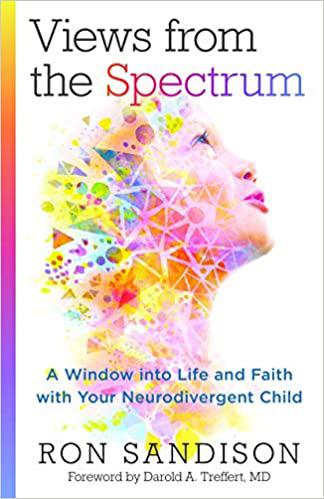
15,000 Scriptures, including 22 complete books of the New Testament. Ron speaks
20-plus education conferences. Ron and his wife, Kristen, reside in Rochester Hills, MI,
Website: http://www.spectruminclusion.com
Ron Sandison works full time in the medical field and is a professor of theology at Destiny School of Ministry. He is an advisory board member of the Autism Society Faith Initiative of Autism Society of America, the Art of Autism, and the Els Center of Excellence. Ron has a Master of Divinity from Oral Roberts University and is the author of A Parent’s Guide to Autism: Practical Advice. Biblical Wisdom published by Siloam, and Thought, Choice, Action. He has memorized over
at over 70 events a year, including
with their daughter, Makayla.
BOOKS
EXCEPTIONAL
AVAILABLE ON AMAZON in paperback: https://www.amazon.com/Views-Spectrum-Window-Faith-Neurodivergent/dp/0825446678 ADVERTISEMENT
Window
Exceptional Needs Today | Issue 11 | 41
Understanding Emotional Status Through Imagery
 By Laura A. Ryan, OT, OTR, OTD
By Laura A. Ryan, OT, OTR, OTD

THE SENSORY STRATEGIES ARTICLE I WROTE FOR ISSUE 10 OF EXCEPTIONAL NEEDS TODAY GAVE A BROAD OVERVIEW OF SENSORY REGULATION AND THE VARIATION OF RESPONSES IN BOTH NEUROTYPICAL AND NEURODIVERSE INDIVIDUALS. IN SHORT, WE ALL UNIQUELY PROCESS SENSORY INFORMATION IN A WAY THAT MAKES SENSE TO BOTH OUR NEURAL SYSTEMS AND OUR WORLD EXPERIENCES.
42 | Exceptional Needs Today | Issue 11
ALL THINGS
OT
For example, in the event of loud and unexpected noise, some individuals may have a high-affect response, which could include big emotions and actions, such as crying and running away.
Conversely, other individuals may have a low-affect response to that same noise, which could be an absent or much-reduced reaction. The previous article also outlined some broad ideas for supporting a child with sensory over-responsiveness or under-responsiveness. This article will provide some information on making identifying complex and ambiguous emotions easier, as well as streamlining your communication, and, ideally, that of other adults in the child’s life, when interacting with a child who is struggling to make sense of incoming sensory information.

Many programs have been developed to teach children about their sensory systems and how their bodies process sensory information. For example, the Alert Program has been in practice since 1995 (Williams & Shellenberger, 1996). This program’s manual, titled How Does Your Engine Run, works to teach an individual about their arousal level—a contributor to self-regulation—using a car’s engine as a metaphor. For instance, in a high arousal state, the car’s engine would be “revving;” in a low arousal state, the car’s engine would be “idling.” For the just right state of arousal, the car’s engine would be “humming along” or “cruising.” To supplement this analogy with a visual, you could use a laminated picture of a road with separate pictures of a race car, a minivan (or perhaps a car familiar to the child), and a moped that the child can Velcro onto the road to depict where their energy level is.
It is important to note that although the program refers to “engines,” one can and should adapt the analogy to meet the child’s interests to foster a connection to this abstract and unfamiliar concept and honor their individuality and passion. For example, suppose the child has a particular interest in dinosaurs. In that case, you could adapt the visual to include the dinosaurs they identify as being high-arousal dinosaurs, low-arousal dinosaurs, and “just right” dinosaurs.
The Alert Program contains three stages, each with a number of “mile markers,” which are objectives that should be met before advancing to the next stage. The stages are developmentally based, and the mile markers are clearly defined with descriptors of activities. The first stage focuses on the identification of the various engine speeds, also known as the levels of regulation one’s body may experience. This stage is led by adults who use their own levels of regulation as a comparison and teaching tool.
The second stage, also led by an adult(s), focuses on various engine speeds (different levels of regulation) and how those speeds are impacted by mood, the environment—such as a noisy room versus a quiet room; and various activities, such as going to a birthday party versus going to school. In this stage, different tools that can regulate engine speed are explored and experimented with. The goal of this stage is to determine, through exploration and discussion, which tools work best for
the child at all levels of regulation. In the third and last stage, the child independently identifies their speed and chooses appropriate strategies, familiar from the second stage, to change their engine speed to “just right.” Adults should facilitate this stage through reflection on the event and the choice of the strategy made by the child. Thoughtful, reflective, and collaborative conversation should take place throughout all the stages to allow the child to gain a mindful and accurate understanding of how their body “runs.”
Another program, the Zones of Regulation (Kyupers, 2008), is a curriculum that develops an awareness of feelings and provides a consistent framework for identifying and communicating those feelings. Often a child (and even an adult) who is upset and dysregulated will struggle to move through the cycle of identifying their feelings (“I am feeling…”), cataloging that feeling (Is this a “good” feeling or a “bad” feeling?), and finding the language to communicate that feeling.
The Zones of Regulation organize emotions in a color-coded chart of blue, green, yellow, and red so the child can better visu-
Exceptional Needs Today | Issue 11 | 43 SENSORY STRATEGIES
alize their feelings as it relates to that chart. When they are dysregulated, they can use this chart by either pointing to the color they are feeling or uttering a single word, indicating the color they are “in.” To help learn the Zones of Regulation color continuum, it is related to the familiar experience of riding in a car. Imagine you are in a car going for a long ride. The first traffic light you come to is green, and you move freely through that light and continue on your trip. In this zone color, you are focused, content, happy, and calm.
You next encounter a construction zone, indicated by flashing yellow lights and yellow signs that say “caution,” and you must slow down and proceed slowly. This yellow zone includes feelings such as confusion, anxiety, overwhelm, and excitement. In this zone, you may be slightly less in control and thus must slow down. This zone can be a difficult one for children to learn because the feelings here tend to be more ambiguous.
You continue on your trip and come to a red light or stop sign. This is the red zone, and this is where you must stop what you are doing because you are angry, mad, or elated, and because of these feelings, you are feeling out of control.
At the opposite end of the Zones of Regulation’s color continuum is the blue zone. Imagine you are on the highway and have been traveling for a long, long time. You are tired, bored, and perhaps stiff and sore from sitting for so long. You come to a blue rest area sign, and you pull over, get out of the car to stretch, and perhaps do some jumping jacks to perk yourself up.
This color chart makes ambiguous feelings more concrete and serves as a means of consistent communication across all caregivers. A child can more easily communicate their feelings with a point to the red zone on a visual or a quick comment of “red.” This can also allow a parent to gauge what their response should be. An indication that the child is in the yellow zone can help a parent circumvent a meltdown by proactively employing strategies. As the child becomes more proficient in using the Zones of Regulation chart, they and their caregiver can hone in on exactly what feeling is happening in that zone and also link simple strategies to each color. For example, if the child consistently identifies they are in the blue zone just before lunch, you can specify if they are feeling tired because they are hungry and link a strategy, such as eating a small snack, to that event.
There are some other equally important points to remember when using the Zones of Regulation. First and most important, no zone is a BAD zone. Each zone gives us
important information we can use to support our bodies. Often children will attach negativity to the red zone because they most easily connect it with being mad or yelling. However, the red zone can give us critical information we need to keep ourselves safe and, in fact, includes the emotion of elation, which is a positive emotion, but one that can cause our bodies to lose some control.
An excellent example of elation is watching a big prize winner on the game show “The Price is Right.” Watching someone who just won a million dollars yelling, jumping up and down, and hugging the other contestants is an excellent example of elation! Secondly, the green zone can and should morph to meet the expectations of the activity at hand. For example, being in the green zone in the classroom may include being calm and talking in an “indoor voice.” Conversely, being in the green zone during physical education class may appropriately include running and shouting to our teammates! As indicated in the previous Sensory Strategies article, there is no right or wrong way to feel, thus, there isn’t a correct zone.
It is essential to give your child autonomy to feel how they feel. For example, some children may identify not feeling well as either in the blue zone (sick) or yellow zone (cranky) because when you don’t feel well, you can be irritable. Having a conversation about why they identify as being in the yellow zone instead of the blue zone will greatly help you understand the unique way your child experiences their world.

44 | Exceptional Needs Today | Issue 11 SENSORY STRATEGIES
The Alert Program and Zones of Regulation are effective tools to identify complex feelings, communicate those feelings, and adjust one’s body and space to feel comfortable and engaged. This article gives a small glimpse into the two programs. Both programs offer family/caregiver teaching opportunities through their manuals and online parent education opportunities (blogs, webinars, etc.). You are strongly encouraged to explore these programs before deciding if one will work for your family.
Resources
The Alert Program
TherapyWorks, Inc. P.O. Box 95316, Albuquerque, NM 87199
Phone: (505) 897-3469; Fax: (505) 899-4071; Website: www.AlertProgram.com Email: manager@AlertProgram.com
Zones of Regulation framework and curriculum https://zonesofregulation.com/index.html
References
Kuypers, L. M. (2008). A curriculum designed to foster self regulation in students with neurobiological Impairments. Master’s Thesis, Hamline University. https://zonesofregulation.com/uploads/3/4/1/7/34178767/ zor_literature_review.pdf
Williams, M. S., & Shellenberger, S. (1996). An introduction to “How Does Your Engine Run?”® The Alert Program® for self-regulation [booklet]. Albuquerque, NM. TherapyWorks, Inc.
Adapted/Expanded by Laura A. Ryan, OT, OTR, OTD based on the original work, The Zones of Regulation™ Curriculum by Leah Kuypers 2011, ©Think Social Publishing, Inc. All Rights Reserved. www.socialthinking.com. www.zonesofregulation.com. Materials and images are not for public distribution.
Laura A. Ryan, OT, OTR, OTD, is an occupational therapist who grew up on a large horse farm in Massachusetts. She has been practicing for 30-plus years and has been using hippotherapy as a treatment tool since 2001. She enjoys seeing the happiness and progress each person has achieved through the therapeutic impact of the horse. Laura has also developed a program for breast cancer rehabilitation using therapeutic input from the horse.
Email: hooves4healingot@gmail.com
Autism Evaluation Resource
The Inland Empire Autism Assessment Center of Excellence (AAC) is a non‐profit, evaluation‐only center that provides a singular solution to a multi‐specialty evaluation process.

We provide the “Gold Standard” in Comprehensive Diagnostic Evaluations for autism and other neurodevelopmental disorders through a transdisciplinary team of experts in the fields of neurology, neuropsychology, occupational therapy, and speech and language pathology.

We’re a trusted resource for thousands of caregivers and hundreds of physicians for children with medical, behavioral, sensory, social, or other complexities.
forward to collaborating in supporting the children and families of our shared community!
COMMITTED
We look
Email
Call us today
us at info@ieaace.com
(909) 799‐3777
More info www.autismassessment4ie.org Follow us ieautismassessment @inlandempireautismasssessmentcenter Exceptional Needs Today | Issue 11 | 45 SENSORY STRATEGIES
TO PROVIDING THE HIGHEST LEVEL OF CARE YOU AND YOUR CHILD DESERVE THE HIGHEST LEVEL OF CARE FROM CHILD EXPERTS
Diagnosing and Treating
Tourette Syndrome
By J. Edwards Holt
Tourette syndrome is a medical condition characterized by sudden and repetitive movements or sounds known as tics. There is no known cause for the disorder, though it is believed to be influenced by both genetic and external factors. People who deal with the syndrome can experience inconvenient and uncomfortable symptoms—with tics manifesting in disruptive and sometimes even dangerous ways.
What is Tourette syndrome?
Tourette syndrome is classified as a neurological disorder. The characteristics of the disorder are known as tics. These tics are involuntary physical or vocal movements or sounds the pa-

tient makes at random. Tics are repetitive, random, and largely difficult to control.
The severity of a person’s tics may either increase or reduce with time. They may be as harmless as repetitive blinking or may involve sporadic arm movements or involuntarily blurting out rude or offensive words or sounds.
Most people start showing signs of Tourette syndrome between the ages of two and fifteen, with male people having a higher likelihood of showing signs than females. Research has shown that while boys are more likely to develop symptoms in childhood, women are more likely to show severe symptoms in adulthood.
46 | Exceptional Needs Today | Issue 11 BEHAVIORAL HEALTH
In many cases, the severity of tics reduces with age, becoming especially controlled during the teenage years. Most people diagnosed with the syndrome do not seek treatment unless their symptoms are overt and troublesome. In most cases, patients can manage on their own.
Diagnosing Tourette syndrome
No specific tests are designed to assess whether a person has Tourette’s, but medical professionals can offer diagnoses by observing the person’s symptoms and medical history. Because vocal or physical tics can be indicative of other conditions, some doctors may choose to ask the patient to undergo other tests.
The symptoms of Tourette syndrome may mimic other conditions, such as autism or even vision problems or allergies. Some tests a doctor might recommend include blood work or MRI scans to cross out other conditions.
When diagnosing Tourette’s, the criteria used by doctors may include the following:
• A patient’s tics began before the age of 18
• A patient’s tics must evolve in frequency, severity, or type with time
• A patient must experience tics either several times daily or nearly daily for over a year
• A patient must experience both motor and vocal tics, though they may not experience both at the same time
• A patient’s tics must not be caused by any substances or medication
With these criteria, doctors can get a clearer diagnosis and rule out other conditions.
Symptoms of Tourette syndrome
Tourette syndrome is characterized by tics. The severity and complexity of tics can vary, and tics can be classified as either motor or vocal tics. Both can be further classified as simple and complex tics.

Simple tics
Simple tics are brief and sudden tics that only include limited muscle groups and are not as frequent. Some examples of simple motor tics include:
• Head jerking
• Shrugging of shoulders
• Darting eyes
• Random mouth movements
• Rapid blinking
• Twitching nose
Examples of simple vocal tics include:
• Barking or making animal sounds
• Grunting or whining
• Coughing or clearing the throat
• Abruptly making random loud sounds
Complex tics
Complex tics are more distinct than simple ones and involve coordinated patterns involving several groups of muscles at a time. Some examples of complex motor tics include:
• Making repetitive walking patterns
• Involuntarily making obscene gestures and motions
• Bending or twisting the body in random ways
• Jumping or jerking
• Compulsively touching or even smelling objects
• Repetitive movements
Examples of complex vocal tics include:
• Mirroring and repeating other people’s words and phrases
Exceptional Needs Today | Issue 11 | 47 BEHAVIORAL HEALTH
• Consistently repeating one’s own words and phrases
• Compulsively using vulgar language or profanities
Treating Tourette syndrome

Tourette syndrome doesn’t have any known cure yet. However, treatment has been developed to help manage the symptoms by controlling tics and helping with stabilizing daily functions. Treatment can be approached by either medication or therapy.
Medication options
Several types of medication can be administered to assist with Tourette syndrome. These medications include:
• ADHD medications: Stimulants and medications that contain dextroamphetamine or methylphenidate are usually administered to people with ADHD to help them increase concentration and focus. These can also be administered to people with Tourette syndrome to help manage tics. Some of these may include Adderall XR or Ritalin LA. Unfortunately, though, in some cases, ADHD medication may exacerbate Tourette’s syndrome.
• Antidepressants: Tourette’s may sometimes show up with additional symptoms of depression, such as sadness and anxiety. Because of this, some people with Tourette’s are also prescribed antidepressants like Prozac or Sarafem.
• Antiseizure medication: Medication used to treat epilepsy and other seizure disorders can treat Tourette syndromes for some people. An example of an antiseizure medication is Topamax.
• Dopamine-blocking medication: These can help people manage their tics or reduce their frequency but may have some side effects. Some of these medications include Risperdal or Haldol.
Therapy options
Different types of therapy can also treat Tourette’s and help people manage their symptoms. Some types of treatment include:
• Psychotherapy: This can help patients deal with additional mental conditions that may arise because of Tourette syndrome, such as depression, anxiety, or ADHD. Psychotherapy helps to deal with mental and emotional issues.
• Behavior therapy: Some people with Tourette’s may undergo Cognitive Behavioral Interventions to help manage their tics. This may include helping to identify tic urges and habit-reversal training.
• Deep brain stimulation: DBS is usually administered for people with severe tics that don’t respond to other forms of treatment. Deep brain stimulation involves battery-operated medical devices implanted into the brain. This helps to stimulate the areas of the brain that control movement. This type of treatment is still in the research stages.
Conclusion
Tourette syndrome can be easily managed or incredibly debilitating for some people. Getting a diagnosis can also be extremely hard, as the symptoms are so similar to other conditions. People dealing with Tourette’s will often self-diagnose as symptoms are very recognizable. However, getting a professional diagnosis for clarity and access to treatment is helpful.
Citations
Centers for Disease Control and Prevention. (2022, May 17). What is Tourette syndrome? Centers for Disease Control and Prevention. Retrieved August 22, 2022, from https://www.cdc.gov/ncbddd/tourette/facts.html
Mayo Foundation for Medical Education and Research. (2018, August 8). Tourette syndrome. Mayo Clinic. Retrieved August 22, 2022, from https://www.mayoclinic. org/diseases-conditions/tourette-syndrome/symptoms-causes/syc20350465
Tourette Association of America. (2022, July 25). Tourette Syndrome: An overview. Tourette Association of America. Retrieved August 22, 2022, from https://tourette.org/about-tourette/overview/
U.S. Department of Health and Human Services. (n.d.). Tourette syndrome fact sheet. National Institute of Neurological Disorders and Stroke. Retrieved August 22, 2022, from https://www.ninds.nih.gov/tourette-syndrome-fact-sheet?search-term=Tourettes
U.S. Department of Health and Human Services. (n.d.). Tourette syndrome. National Institute of Neurological Disorders and Stroke. Retrieved August 22, 2022, from https://www.ninds.nih.gov/health-information/disorders/tourette-syndrome?search-term=Tourettes
J. Edwards Holt is an American author who has spent a lifetime dealing with mental health problems. Diagnosed with Tourette syndrome, anxiety, and depression at 10 years old, and later OCD and ADHD at 13, success has never come easy for him. After spending most of elementary and middle school isolated, in and out of therapy, Holt managed to turn things around and graduated high school as Valedictorian, later on graduating college with a major in education. Even today, as a successful author, Holt still copes with symptoms of his illnesses. Because of this, he is a continued advocate for those struggling with mental health, incorporating bits and pieces of his own experiences in his written works.
Website: jedwardsholt.com
48 | Exceptional Needs Today | Issue 11 BEHAVIORAL HEALTH
Kate Makes it Great!
PARENTAL SUPPORT
Deducing The Cause of Unwanted Behaviors
 By Kate C. Wilde
By Kate C. Wilde
HAPPY NEW YEAR TO ALL OF YOU! AS I SIFTED THROUGH AND READ ALL THE QUESTIONS YOU SENT IN, I THOUGHT, “HOW GREAT IT WOULD BE IF I STARTED THE NEW YEAR BY SHARING A PARTICULAR WAY TO HELP YOU ANSWER ANY QUESTION YOU MAY HAVE ABOUT YOUR LOVED ONE?”

Exceptional Needs Today | Issue 11 | 49
A kind of “brainstorming formula” that matches your incredible knowledge and love for your child or adult could help unlock and solve any tricky situation you may face in 2023. For this brainstorming formula to have extra power, use it while also believing that your exceptional loved one:
• Is always doing the best
• Has a reason for doing what they are doing
This perspective is imperative because it helps us move away from thinking that our children or adults are trying to be difficult or just plain naughty. It is my experience that children and adults with special needs just have too much going on to have the luxury of being naughty for naughtiness’ sake.
With that mindset, look at your situation/question from the idea that the solution could be in the following areas:
1. Their environment, the objects, and the sensory input that surrounds them
2. Their internal environment, diet, or overall health
3. Their growth curve: learning, growing, and resting
4. Their need to regulate
5. Your reaction to what is happening
I have chosen a question to illustrate what this brainstorming formula looks like in action.
Carol from Florida in the United States asks:
My Aaron is seven years old and has ASD. Although he has been fully potty trained for two whole years and went happily all on his own, he recently started to pee in his bedroom. Why do you think he has started doing this? Is it possible he does not know how to use the toilet anymore? Please help!
Hi Carol, thank you so much for your question. It happens that children/adults on the spectrum go through phases like this. Let’s run your question through my brainstorming formula and see what possible solutions we create for you to explore.
1. His environment
Check out if anything is keeping him in his bedroom. Maybe there is something in there that is taking all his attention. Ask the following questions:
• Does he have a device he is getting so absorbed in that he does not feel his need to go to the toilet?
• Is his room overstimulating from a sensory perspective?
• Where is the spot where he pees? What is around that spot?
• If he pees by the window, is he getting absorbed in what is happening outside?
I once worked with a family whose child was peeing at the top of the stairs. When we looked at his environment, we saw he was looking at the skylight. He would go there when it rained or snowed or the leaves were falling. He would get so absorbed in looking at this that he did not want to move and would not make it to the bathroom on time. A simple environment solution to the above possibilities would be to put up a blind in the skylight and not allow him to be on a device when he is alone in his bedroom. Get the idea?
2. His internal environment, diet, or overall health
Using the bathroom requires a skill called interoception: the ability to listen to the messages our body is giving us. This skill can get harder for an autistic person when their internal system is unwell or out of balance. I would ask the following questions:
• Has Aaron started to eat something new?
• Have you bought a new brand of the same kind of food?
• Is he eating more sugar than usual?
• Does he have a low-grade fever?
• Is he sickened from anything?
Aaron could be intolerant or reacting to a new food. If you find this is the case, the solution could be as simple as removing that food item from his diet. Or to help him recover from any sickness he may be experiencing. This will help his internal system regain balance and his toilet skills back in full force.
3. His growth curve
Where is Aaron on the continuum of learning, growing, and resting? Make the following inquiries:
• Is Aaron currently making strides in learning another skill?
• Has he just gone through a period of rapid growth?
When we ran a therapy program for my autistic niece, she gained and lost her potty training three times. When we looked at what was happening around the time she “lost” her potty-training skills, we realized it was when she was in the middle of learning another new skill. For instance, when she jumped from communicating with one word to small sentences, she flourished in her ability to talk but could not maintain the focus she needed to do that and go to the bathroom. But once she had the communication skill down and it no longer took her the same amount of mental effort, her potty-training skills resurfaced, and she could do them simultaneously. If this is the case for Aaron, the solution here is to be understanding and know it will reemerge once that other skill is accomplished.
What do I mean by a growth curve? All of us have our own individual growth curves, and Aaron is no different. None of
50 | Exceptional Needs Today | Issue 11 PARENTAL SUPPORT
us just keep growing at the same pace in the same direction all the time. We all grow, and we all need time to rest and recalibrate. Sometimes we grow at a fast pace, sometimes we look like we are “treading water“ and staying in the same spot, and at other times (like what may be happening with Aaron), it may look like we are indeed “losing” skills and going backward. But I would like to suggest these stages are all part of growing, all part of his growth curve. At times, we actually need to rest, stand in one spot, and take it easy.
For our autistic children and adults, rest can look like stimming more or losing skills. That is happening on the outside, but on the inside, they are actually processing and calibrating all they have just accomplished. This processing period is really fertile and really needed if he is to continue gaining and growing new skills.
Our children will need to rest after a period of accelerated growth. If your answer here is yes, the solution is to give him time to rest. Lessen demands on him; take a step back from your therapy program. Lessening these demands may create more space for him to use his potty skills during his resting period.
4. His need to regulate
Ask yourself this question: Does Aaron have enough time in his day where he is allowed to stim? This may be a new thought for you, or you may already allow him to stim. If you do, that is fabulous! Keep doing that.
Stimming, in my opinion, and experience, is a really helpful, useful, and brilliant activity our children do to regulate themselves. It is vital for growth and development. It is essential for coping with the sensory overwhelm individuals experience daily. Sometimes children who need to stim but are routinely stopped retreat to their bedrooms where they can stim in private without the “threat” of being stopped. If this is the case for you, first, I suggest you read chapter two of my book, The Autism Language Launcher, which will give you a deeper insight into why stims are so important. The solution would be to start allowing Aaron to stim around the house. This alone may rectify the situation.
5. Your reaction to what is happening
Ask yourself these questions: How do you react when he pees in his bedroom? Do you tell him off in a loud voice or wave your arms around in exasperation? Do you give him a long stern lecture about not doing this again while using a lot of interesting facial expressions?
My late colleague and friend, William Hogan, described this type of reaction as “lighting up like a tree.” We can often be more expressive and interesting when our children do something we do not want than when they do something we do want.
If your child looks at you when he pees or comes out of his bedroom to tell you he has peed, he is likely doing it because he wants to see your “lively” reaction.
There is an easy solution to this. Stop “lighting up like a Christmas tree.” Take a big breath and relax; nothing terrible has happened; it is just pee. Everyone is alive and well. Say to yourself, “If I want him to stop doing this, then I have to change my reaction to it.”
If he is just looking for a reaction, find something you DO want him to do and give a big, over-the-top reaction to that (with a lot of passion, love, and joy). You will likely find that he starts doing that activity instead of peeing in his bedroom.
Have fun using this new brainstorming formula, and don’t forget to write and tell us how it went. Have a great start to 2023!
Kate C. Wilde has spent the past 30 years working with children and adults on the autism spectrum and their families, as well as with therapists, educators, and schools. She is the author of the acclaimed books, Autistic Logistics: A Parent’s Guide to Tackling Bedtime, Toilet Training, Tantrums, Hitting, and Other Everyday Challenges and The Autism Language Launcher: A Parent’s Guide to Helping Your Child Turn Sounds and Words into Simple Conversations, and is renowned for the well-attended courses she teaches throughout the U.S., Europe, and Asia. Her YouTube autism quick tip videos, delivered with her trademark infectious enthusiasm, have garnered a following worldwide.
Websites: https://www.katecwilde.com/, https://www. autismcrisisturnaround.com/

IN SEARCH OF PERSONALIZED EXPERT GUIDANCE?
Send us your parenting questions, woes, concerns, and tricky situations with your beautiful, exceptional children. This includes all of you amazing professionals out there. Kate will answer up to five questions in every issue in her Kate Makes it Great! column. Kate has worked with children and adults on the spectrum for the past 30 years. She has clocked more than 20,000 therapy hours and has worked with well over 1,500 different children. Whatever you are facing today, Kate has most likely experienced it in some form. Her answers will be practical, doable, inspiring, optimistic, down to earth, and real. Together, there is nothing we cannot face with a little joy and love.
Submit your questions to submissions@exceptionalneedstoday. com
Exceptional Needs Today | Issue 11 | 51 PARENTAL SUPPORT
Yes, I’ll Hold… Navigating Insurance Claims as a Special Needs Parent
By Carmen A. Brown
TICK, TOCK. TICK, TOCK. MY CLOCK SEEMS TO BE LOUDER THAN USUAL AS THE INSURANCE AGENT IS SCROLLING ON HER COMPUTER. SHE POLITELY ASKS, “MS. B, DO YOU MIND IF I PLACE YOU ON A BRIEF HOLD WHILE I CHECK INTO THIS MATTER?” BEGRUDGINGLY, I RESPOND, “YES, I WILL HOLD,” ALL THE WHILE IN THE BACK OF MY MIND KNOWING IT WILL BE ANYTHING BUT BRIEF. INEVITABLY, I FIND MYSELF BOBBING MY HEAD TO THE ELEVATOR HOLD MUSIC THAT GRADUALLY PULLS YOU IN.

52 | Exceptional Needs Today | Issue 11 MY WORD
As a special needs mom of three kiddos on the autism spectrum, I find myself in this situation more often than I care to admit. We need services for our children, claims need to be appealed, and authorization requests often need to be expedited with the help of a phone call from an exasperated caregiver. Each time I sit on hold, I’m at the edge of my seat with bated breath, wondering what the answer will be. What happens when the insurance company says, “I’m sorry, but we don’t cover that. You have exceeded your visits for what your Managed Medical Plan will cover”? My what? Wait! Is that different from what’s approved on the authorization? The short answer is…yes, it is!
Throughout the years, I have lived in several states and have had commercial insurance along with state insurance. There are two things that have been consistent. First is the frustration that comes along with the news or answers you receive. Second is the difficulty uttering the words “I need help.” There is such irony in this three-word phrase we teach our kiddos to say—we expect them to use it even when it’s frequently avoided as a grown-up. Despite finding it hard to say, I almost always needed help.
I called the 1-800 number that was on the back of my insurance card and blurted out the words “I need help!” as soon as the woman answered the phone. Bless her heart; I said it so fast that the woman couldn’t even tell me her name. It was an eruption of

words and emotions. I explained I was told my son couldn’t exceed $1500 of OT services for the fiscal year that had just started a month prior. It devastated me…we were going twice a week, but at this rate, these services would last for two months at the most. And we had already used one of those months. What was I going to do?
It was at that moment that I was told I needed a case manager (state insurance) or a customer service advocate (commercial insurance). “A do-what? Please explain what this is and why this hasn’t been offered before.” She explained, “This person will be YOUR advocate while you are advocating for your loved one. This person will listen to your concerns, connect you with providers, and gently provide billing offices with corrected information so claims can be paid.” Within moments, I was given the phone number of my dedicated case manager/advocate.
I called my case manager in the parking lot and explained what had happened. She listened, asked questions, took notes, and talked me off my ledge. She assured me everything would be all right, and you know what…it was! Services weren’t interrupted, and I had peace knowing I wouldn’t have to cross that bridge again alone.
Your customer service advocate may or may not be the same person for the life of your policy. Each company has its own rules, but you should be advised of the timeline when they are assigned to you. My superhero was assigned to me for 90 days.
Just know that if you ever find yourself in a season of drought or your frustration level is whistling loudly like a teakettle, please lean into your advocate. Often they are parents of special needs kiddos with an abundance of resources.
Iron sharpens iron. Friend sharpens friend. Feel empowered knowing that you no longer have to “hold” alone anymore.
Carmen A. Brown, native Arkansan, now Floridian, has a passion for helping people and advocating for those who don’t have a voice. She worked in the insurance field for nearly 15 years prior to having a career change to the ABA field. As a mother of three children, all uniquely on the autism spectrum, she shares her knowledge, resources, and stories with other families on a weekly segment called “Coffee with Carmen.” She is also an active member of the Developmental Disabilities Council (DDC), Special Needs Advisory Council (SNAC), Autism Society of Greater Orlando (ASGO), and Talk About Curing Autism (TACA).

Exceptional Needs Today | Issue 11 | 53 MY WORD
US Government Benefits and Private Funding Can Create a Great Life!
By Ryan F. Platt, MBA, ChFC, ChSNC, CFBS

A PILOT PROGRAM HAS BEEN INSTITUTED AND FUNDED BY THE FEDERAL GOVERNMENT TO DECREASE THE USE OF SUBMINIMUM WAGE JOBS FOR THOSE WITH DISABILITIES IN THE HOPES OF CREATING MINIMUM WAGE OR BETTER JOB OPPORTUNITIES. THE SUBMINIMUM WAGE TO COMPETITIVE INTEGRATED EMPLOYMENT PROGRAM WAS FUNDED WITHIN THE SPENDING BILL OF 2021 AND PROVIDES $177 MILLION WORTH OF GRANTS TO 14 STATE VOCATIONAL REHABILITATION PROGRAMS. (HEASLEY, 2022)

54 | Exceptional Needs Today | Issue 11
According to the Department of Education, “With the grants, state vocational rehabilitation agencies will focus on using novel approaches to link people with disabilities to green jobs and opportunities in essential worker industries, the transportation industry, and the arts, where they will work alongside their peers without disabilities for comparable wages.”

“These grants will feature collaboration between state and local providers, public and private employers, and advocates,” officials said. This could certainly help individuals with disabilities find a better-paying job, but it could come with challenges. One of those challenges is the low pay Direct Support Professionals (DSPs) receive. DSPs are those individuals paid to help people with disabilities live their life in the community and out of facilities through Medicaid waiver programs.
DSPs provide daily life assistance that includes bathing, dressing, shopping for groceries, preparing meals, transportation, and supportive employment or job coaching. A job coach is critical for many individuals with intellectual and developmental disabilities for finding and keeping employment. The job coach stays on the job as a one-on-one with the individual to ensure they learn the skills necessary to complete their tasks and be successful. The issue is, DSPs are not being compensated well and are leaving the industry.
Across the U.S., the average pay for DSPs in 2021 was $14.15 an hour, or less than $30,000 a year (in some states it can be as low as $8.11 per hour), according to data published in May 2021 by the U.S. Bureau of Labor Statistics. (Stuckey, 2022) This is where this pilot program of finding competitive employment could fall short because without a parallel bill that increases the pay of the DSPs, there may not be enough job coaches to help those with Intellectual and Developmental Disabilities be successful in an integrated competitive employment situation.
This disconnect between many government benefit programs is one reason a family needs to have their own plan in place for the care needs of their loved one with a disabil-
ity. It is not enough to rely on the government to provide all the support an individual with a disability will need for their lifetime. It is critical families create a vision for their loved one’s future so they can ensure enough funding is available when the government funding falls short. For instance, if an adult with a disability is able to find competitive employment and needs a one-on-one job coach, but none are available through the government benefit system, the family’s plan needs to step in to provide the resources necessary to privately fund that job coach so their loved one can learn, master, and keep that employment. There are several other areas where private funding can help supplement the government benefits that an individual with a disability may receive, including housing, transportation, day-to-day care, and, of course, possible employment.
It is simple to make a plan! It takes knowing the steps and then acting. Please feel free to learn more about planning at www.aspecialneedsplan.com
References
Heasley, S. (2022). Feds send millions to states to phase out subminimum wage employment. DisabilityScoop. https://www.disabilityscoop.com/2022/10/03/feds-send-millions-to-states-to-phase-outsubminimum-wage-employment/30063/
Stuckey, A. (2022) In some places, DSPs earn just $8.11 per hour. DisablityScoop. https://www.disabilityscoop.com/2022/09/29/in-some-placesdsps-earn-just-8-11-per-hour/30059/
representative
SIPC.
affiliated companies. This article is not a recommendation
Website: http://www.aspecialneedsplan.com
Phone: 704-326-7910
Location: 101 N. McDowell Street, Suite 120 Charlotte, NC 28204
Exceptional Needs Today | Issue 11 | 55
FINANCIAL FOCUS
Ryan F. Platt, MBA, ChFC, ChSNC, CFBS, is a registered
of and offers securities, investment advisory, and financial planning through MML Investors Services, LLC, Member SIPC. Securities and investment advisory services offered through qualified registered representatives of MML Investors Services, LLC, Member
A Special Needs Plan is not a subsidiary or affiliate of MML Investors Services, LLC or its
or endorsement of any products.
This disconnect between many government benefit programs is one reason why a family needs to have their own plan in place for the care needs of their loved one with a disability.
MEET THE
ADVOCATE
Q&A With Parent Collaborator Helping Special Needs Families Succeed
By Amy KD Tobik
I had the pleasure of interviewing Maria Gilmour, PhD, BCBA-D, LBA, a parent educator with over two decades of experience and talked about the challenges families often confront when coordinating care and education and the value of intentional collaboration. Dr. Gilmour shares ways her professional approach and/or methodology shifted over the years and introduces us to her new book, SEVEN SUPERPOWERS: How Parents Can Shift from Punishment and Control to Comfort and Success.
Amy: You have worked professionally with families and educators in programs for children with special needs for more than 20 years. What are the major challenges affecting families that have you observed during these times?
Maria: I could write a book about this question! I have observed and worked with a variety of challenges, but the major ones are typically not knowing how to interact with children when difficult behaviors occur and how to communicate with other family members, including another caregiver, to help get everyone on the same page. The collaboration among parents, siblings, and other family members is crucial, and one where I must make sure everyone understands being on the same page is truly what is best for a child. I don’t have a perfect line of communication with my own husband all of the time, but we make an effort to get to the agreed-upon approaches so we aren’t confusing our family and what is expected. This is probably the biggest challenge I’ve seen overall.
Amy: Parenting is tough, especially when there are different needs within the family. As a behavior analyst and
parent educator, what supports do you think parents could benefit from?
Maria: Parents need as much support as they can get! I think parents benefit from evidence-based therapy for their children and for them as a parent. For example, we oftentimes triage our families to obtain speech, occupational therapy, and mental health services, and we have resources for families to ask the right questions in order to find a provider who uses evidence-based practices. We always recommend multi-disciplinary collaboration with our team. This means all related services (e.g., speech, occupational, and medical service providers) meet with the family and behavior team to collaborate with one another.
Amy: Has your professional approach and/or methodology shifted over the years?
Maria: It most certainly has! When I was just out of graduate school, I thought I knew exactly what I would be doing the rest of my life—working at an agency and seeing it grow and grow so I could help as many families as possible. When I entered the field as a professional and saw the need for focused caregiver collaboration, I shifted my practice to support parents, caregivers, and the collaborative team. In my experience, if the parent has the reins and leads the team as director of their child’s supports, that’s when I see the best gains.
Amy: It’s exciting to learn you recently published the book SEVEN SUPERPOWERS: How Parents Can Shift from Punishment and Control to Comfort and Success! Please share your inspiration.
Maria: Parents inspire me—ALL parents. I watch my husband with the kids and our relatives’ kids of all ages, and

56 | Exceptional Needs Today | Issue 11
I learn a lot from him. My own parents really inspired me to write SEVEN SUPERPOWERS because, even though my childhood was far from perfect, my parents really had the basics down. I believe their methods helped my siblings and me thrive as kids (even if we fought with each other and complained we had to do things we didn’t want to!).
I am inspired by parents, stepparents, grandparents, aunts, uncles, teachers, and other professionals, and I can see how much effort we put in to make our kids healthy and happy. We do the best we can, and this is so obvious to me. I would want someone to point me in the right direction if they had the experience and foresight to help me through a tough time, and I have definitely felt this in my life. I want all parents to feel supported even when it seems like you are completely alone and going through difficulties raising a family.
Amy: The book has so many fabulous ideas—can you share your creative approach to cross-disciplinary collaboration? Whom does it benefit?
Maria: Thank you! I love talking about collaboration because we all have amazing ideas and need to be heard, but the set-up needs structure and patience. Those are two ideas I discuss in the book, and I truly believe they are real superpowers human beings have. I’ll be honest with you, I did not like collaborating when I first started in the field in 1999. I remember being in an IEP meeting for the first time, and I felt like no one would ever be on the same page. There were arguments and many discussions about legal parameters. I remember thinking, “Can we get this kid what he needs already?” I never understood the barriers to getting child services until that meeting.
Since then, I’ve embraced the collaborative approach. It’s not always perfect, and I have strong opinions and emotions when I’m in meetings and disagree with another approach, but taking a step back and being patient with the process has helped me tremendously. I LOVE talking with SLPs, OTs, medical doctors, mental health professionals, teachers, administrators, and insurers because I know when the collaboration is up and running, it can be a positively life-changing experience for a child and the family.
Amy: What do you think parents will relate to most?
Maria: Delayed gratification is a chapter about what I think is one of the most important concepts we can learn. If we model for others how to delay getting something we want, that is an unbelievable superpower, because it is something that helps people in so many different areas of life. When you can wait to get a piece of candy at age five, you are more likely to be able to wait in line at the post office as an adult.
Teenagers go through a very challenging time when they have sudden shifting interests, feelings, and growth. Especially now with social media and screen access at our fingertips virtually any moment of the day, and our own use of
screens as parents being modeled often to our kids, having limits and boundaries on access to things we want is truly a lifelong skill I believe can help people get through the most difficult of times.
Amy: What do you hope families will gain from reading your book?
Maria: I hope families will be able to bring things back to the basics even when the going gets tough. On the last page of the book, I wrote a little summary of each of the seven superpowers; I ripped it out and put it on my refrigerator. I hope families gain a little glimpse of something they can use (what I call “activating your superpower”) and have those quick references in the moment. I usually say to myself during an argument with a teen in my family, “What can I do right now?” Maybe it’s being patient for two more minutes, or maybe it’s setting up a little routine to make the transition fun, or perhaps it’s doing a silly dance and belting a Justin Bieber song. The only thing is that when my husband sees the list of superpowers, he gets ignited, and then I have to follow his lead because he’s right on when I’m not in the headspace to ignite my own superpowers. I am secretly impressed by this!

Exceptional Needs Today | Issue 11 | 57 FAMILY SUPPORT
Amy: What are your future plans?
Maria: I had grand plans to create a series for different groups of people depending on their role in supporting the child. Siblings would be the first, then grandparents, then relatives, teachers, etc. But I’ve gotten quite a bit of feedback from grandparents—they stated they can better un


derstand their own adult child’s family dynamics. The seven superpowers helped them see a new perspective and that an “old dog can be taught new tricks!” I’m looking forward to hearing more from parents and family members to see what is most powerful to them.

Maria F. Gilmour, PhD, BCBA-D, is a behavior analyst with over two and a half decades of experience working in the field of applied behavior analysis and developmental disabilities. She is the author of SEVEN SUPERPOWERS: How Parents Can Shift from Punishment and Control to Comfort and Success. Dr. Gilmour is also the Chief Clinical Officer of Gemiini Systems, a video modeling company, and President of Wynne Solutions, an ABA agency focusing on providing caregiver education and direct intervention services via telehealth. Dr. Gilmour collaborates with multidisciplinary team members across the globe to provide clinical supports in a variety of settings while continuing to pursue research on the use of technology to teach a wide variety of skills.

Websites: www.wynnesolutions.com, www.SevenSuperpowers.com, www.gemiini.org

Amy KD Tobik is the editor-in-chief of Exceptional Needs Today magazine. She coordinates and directs an impressive group of doctors, therapists, and writers to provide expert guidance and support for special needs families. A graduate of Sweet Briar College in VA, Amy’s experience includes more than 30 years of writing/editing monthly magazines, newspapers, technical documents/manuals, books, and websites. Her special interests include advocating for children, special needs families, and education. She is the CEO of Lone Heron Publishing, LLC.
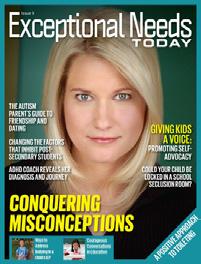
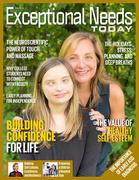
Website: exceptionalneedstoday.com






L
A D V
W W W . E
C
P T I O N A L
.
EXCEPTIONAL NEEDS TODAY 58 | Exceptional Needs Today | Issue 11 FAMILY SUPPORT
E T ' S W O R K T O G E T H E R
E R T I S I N G @ E X C E P T I O N A L N E E D S T O D A Y . C O M
X
E
N E E D S T O D A Y
C O M
Preparing for Life after High School



NY | CT | NJ | CA | Transitions | Online
the QR code below to learn more about Winston Transitions
is never too early to start transition planning!
in New York and San Francisco area, our program is individually tailored to meet the specific academic, social-emotional, and employment goals for your child, age 17-21+ with learning differences.
Scan
It
Located
Preparing a School for the Arrival of Your Blind Child
By Dr. Ronald I. Malcolm, EdD
YOUR BLIND CHILD IS IN THE PROCESS OF JOINING A REGULAR EDUCATION CLASSROOM. WHILE YOUR CHILD MAY BE EXCITED TO JOIN A “SIGHTED” CLASSROOM AND MAKE NEW FRIENDS, YOU HOWEVER, MAY FEEL VERY ANXIOUS ABOUT HOW YOUR CHILD WILL BE RECEIVED BY THE CLASSROOM TEACHER AND PEERS. FOR YOU AS A PARENT, HERE ARE 10 PRACTICAL TIPS TO ASSIST WITH MAKING THE ARRIVAL OF YOUR BLIND CHILD INTO A REGULAR EDUCATION SETTING MORE SUCCESSFUL.

1. Meet the regular education teacher
your child will present. Don’t assume the teacher has no background in working with blind children in an inclusive classroom setting. Many blind children are educated with their sighted peers in the same classroom. If your child’s teacher has never taught or interacted with a blind individual, then ensure them you can be an excellent resource for them in learning how to work with your child successfully. PARENTAL SUPPORT
Setting up private time to meet your child’s regular education teacher is a great first step. This is an opportunity for you to explain the type of vision loss your child experiences. The regular education teacher will probably be curious to understand the educational and medical needs 60 | Exceptional Needs Today | Issue 11
2. Orientation and mobility
It would benefit your child to have a full tour of the school in general, but specifically the classroom, before the first day of school. This would allow your child to meet their assigned classroom teacher and principal and begin to develop a relationship with them. It is also an excellent time for the school staff to meet your child’s Orientation and Mobility Specialist. Blind children have a lot to deal with on their first day in school. Knowing the general layout of the classroom, the location of their desk, and how to navigate the school to find the restroom, gymnasium, cafeteria, nurse’s office, playground, etc., will assist with developing a healthy sense of achievement within your child.
3. Greeting a blind person
Many students and staff members want to greet your child throughout the school day. They may say, “Hi, Billy,” or “Good Morning, Susan.” While it is wonderful to see them attempting to interact, it can also confuse your child, and they may have no idea who it is that is greeting them. Simply stating, “Good Morning, Susan, this is Mrs. Brown,” will quickly assist your child with identifying who is greeting them. When the adults in the school environment model this approach, the students are likely to also start using this strategy.
4. Books and knowledge
Please encourage your child’s teacher to expose the students in the classroom to blind-related issues by reading them books about blind people. Such books could include:
• The Black Book of Colors—Menena Cottin
• A Cane in Her Hand—Ada Bassett Litchfield
• Looking Out for Sarah—Glenna Lang
• Six Dots—Jen Bryant
• My Three Best Friends and Me, Zulay—Cari Best
5. Working with the vision teacher
Before your child’s arrival at the school, find out the name of the vision teacher who will work with your child. Be sure the vision teacher can connect with the regular education school staff. That way, all the educators and support staff at the school will have the opportunity to ask their questions openly and gain the information they need. A vision teacher can effectively explain the modifications or accommodations that are best. They can dispel any “myths” the staff may have about blind children.
6. Advocate: Don’t overwhelm
Remember, as you advocate for a child, they could be one of approximately two dozen children in the classroom. While you, of course, are focused on your child’s visual needs, this teacher may have addition-

Exceptional Needs Today | Issue 11 | 61 PARENTAL SUPPORT
al students with various disabilities within the classroom, as well as children with disciplinary issues, children of poverty, or even children who have English as a second language. So, take a breath and try not to overwhelm your child’s teacher by assuming it is expected they become an “expert” on blindness overnight.
Ask a few questions, such as: Does the school have any Braille signage located around the school? If your child utilizes a Perkins Brallier or a Closed-Circuit TV (CCTV), is there a special location in the classroom where equipment could be set up? Does the school library have access to any books on tape? Can movies shown at school include “Open Captioning” for your child? These types of questions will assist the teacher in understanding your child’s needs better. It is the start of them being able to educate and serve your child better during the school day.
7. Large print versus Braille
Many educators who have not been exposed to blind students may assume all blind children are fluent in Braille. Your child may be legally blind and prefer to access their reading materials through large print. Inform the classroom teacher which reading medium is currently meeting the needs of your child. Let them know it takes some time to get print materials translated into Braille or large print copies made. So, the sooner you know what novels, workbooks, or reading materials are required for the classroom, the quicker you’ll be able to access them. Ask your child’s teacher to compose a list of what will be needed for the school year. Then ask for the list to be given to the vision teacher. Large print materials and Braille books take up a lot of space. Show the regular classroom teacher an example of a Braille book or large print workbook to give them a better idea of how much space they will need to reserve in the classroom for these items.
8. White Cane etiquette
It would be great for your own child to explain white cane etiquette to their own peers if possible. However, if your child has additional disabilities or you feel they are too young to handle this responsibility, then perhaps the vision teacher or the Orientation and Mobility Specialist can explain it to the sighted children in the classroom. It needs to be explained that the cane is not a “toy.” The cane is not something sighted students in the classroom should ever borrow or play with. It can further assist the students in understanding that if your child is coming down the hallway using their cane and the sighted child is in the way, the sighted child needs to let your child know they are there or simply move out of the way. It can be VERY distracting to a blind child when a sighted peer panics and decides to “jump over” your child’s cane to get
out of their way. Encourage the classroom teacher to model appropriate terms when referring to the white cane. If they refer to it as a “stick,” then the sighted students in the classroom will also begin doing so. Finally, the white cane should never be used as a “weapon.” It is not appropriate for any student to use the white cane to hit another student because they are upset with them. This rule also applies to your child.
9. Fostering independence
One of your child’s ultimate goals should be to increase their level of independence to the maximum extent possible. Many sighted children are “eager” to assist a blind student. However, you don’t want your child to develop a sense of “learned helplessness” or expect all sighted people will go out of their way to assist them. Remind students not to simply grab a blind student and pull them in a certain direction. This can disorientate a blind student and cause confusion. The vision teacher and Orientation and Mobility Specialist can demonstrate how students can become a “sighted guide” when necessary. As a parent, model for the staff and students at the school how you encourage your child to be independent throughout the day without having to rely upon the assistance of others.
10. Encouraging questions
Prepare your child for the questions they may be asked at school. It is only natural that sighted children would have questions about your child. Let the teacher know it is fine for the students to interact with your child and ask respectful questions. Practicing these questions and the answers your child may use will assist them with their sense of confidence.
The sighted children may want to know what your child can see. They may wonder why your child wears glasses when they can’t see. How are they able to tell when the classroom lights are turned off or on? Why do they use a white cane instead of bringing a dog to school? Does it hurt to wear glass eyes? What happens if they have a band-aid on their finger that they use to read Braille? Is it hard to learn Braille?
Having your blind child integrated into a regular education classroom is a fantastic way to include them in their school environment. Being “included” means that they are not just a “visitor” to the classroom. The sighted students may be extremely curious about your child’s blindness. However, after some time has passed, they will begin to view your child as just another member of their classroom.
Dr. Ronald I. Malcolm works with students with disabilities in the Northwest Arctic. He recently retired as an Assistant Director of Special Education for a public school district. He is also an Associate Faculty Member with the University of Phoenix and a Special Graduate Faculty member at the University of Kansas. He has bachelor level degrees in English and Special Education. He holds master level degrees in Counseling, Special Education, and School Administration. His doctorate degree is from Northern Arizona University in Educational Leadership. His postgraduate degrees are in Positive Behavior Supports and Autism Spectrum Disorders. He has worked for the past 38 years with students between the ages of three and 21 with disabilities and various medical needs in both school and community-based settings.

62 | Exceptional Needs Today | Issue 11 PARENTAL SUPPORT
THE FRIENDSHIP & DATING DUO
How To Talk With People So They “Click” With You
By Jeremy Hamburgh and Ilana Frank

HAVE YOU NOTICED HOW OFTEN AUTISTIC ADULTS TRY TO START CONVERSATIONS ONLY TO HAVE THEM DISINTEGRATE A FEW MOMENTS LATER? SO MANY PARENTS SPEND TIME WONDERING WHY SOME NEUROTYPICAL PEOPLE CONNECT SO EASILY WHILE MOST AUTISTIC ADULTS SWING-AND-MISS SOCIALLY.

Exceptional Needs Today | Issue 11 | 63
If you’re worrying about the “click” that never comes, you’re in good company. That failure to click is a theme in almost every strategy session we do with families, and it’s a huge problem. Every friendship starts with a conversation that clicks. Every relationship starts with a conversation that clicks. So, when your child isn’t clicking with anyone, they may feel as if their social life is unfulfilling.
Even worse, the cycle of trial-and-error can be damaging to your child’s mental and emotional health. Frustration. Anger. Loneliness. Hopelessness. These are all emotions that can build up when they try to be social but strikeout, again and again, over the course of a lifetime.
But swinging and missing doesn’t need to be the norm for your child. In fact, autistic adults can bond with people quickly and genuinely. The reason why is surprisingly simple: Autistic adults tend to hate small talk. They want to jump right into the deep end of the conversation pool.
That can be a great trait because small talk is one of the biggest reasons why conversations fail to launch. It doesn’t matter whether the participants are neurotypical or neurodiverse—small talk tends to be a conversation killer. So, the autistic aversion to small talk can actually be an advantage!
Think about your own friendships for a moment: You’ll notice you speak candidly to each other. Your conversations with them are remarkably real and raw. You talk about your shared interests. You complain about your shared interests. You commiserate. You celebrate. You seek advice. You give advice. You tell stories, and you get stories in return.
That candidness is a big part of what makes a friendship so liberating.

So, empower your child to skip the small talk. Go right to the good stuff. In fact, we often see that when an autistic adult talks to another person like a friend, that person starts assuming the role of friend. It’s Jedi mind stuff, but it works.
People like depth. People don’t enjoy exchanging facts. Do you really care where someone went to school? Where they were born? What their job title is?
Nope, it’s just polite chit-chat (chit-chat that’s dragging the conversation in a downward direction). But ask someone their opinion about pineapple on pizza, and now you’re talking!
That Pokemon Legends Arceus glitch that breaks the game’s graphics by walking in circles? Parents have no idea what we’re talking about, but your child’s peers might be thrilled to dive deep down into that rabbit hole. The time
when Goku transformed to Ultra Instinct? Those aren’t random words strung together. There are literally swarms of your child’s peers who can talk about that anime moment until they’re blue in the face.
64 | Exceptional Needs Today | Issue 11 SKILLS FOR LIFE
Autistic adults can bond with people quickly and genuinely. The reason why is surprisingly simple: Autistic adults tend to hate small talk. They want to jump right into the deep end of the conversation pool.
Those conversations—the deep, genuine ones—are where the elusive “click” resides. So perhaps we can all reach a consensus that pestering autistic adults to wade through bland background questions isn’t the key to social success.


Instead, encourage your child to jump right to the good stuff and see where it takes them! And if it takes them nowhere, encourage them to try again and jump to the good stuff with someone else.

Someone somewhere can’t wait to “click” over pineapple pizza, game glitches, and internet-breaking anime moments!
Jeremy Hamburgh and Ilana Frank run the Social Life 360 program (www.MyBestSocialLife.com), which is a groundbreaking program that empowers autistic adults to meet new people, make new friends, start dating, and build relationships using a combination of science-based social strategy, wrap-around coaching and mentoring, and a warm, loving, and inclusive community all working towards the same goals. Parents can schedule a no-cost 90-minute Strategy Session for their family at MyBestSocialLife. com/Apply or by emailing them at Jeremy@MyBestSocialLife.com or Ilana@MyBestSocialLife.com.
Website: www.MyBestSocialLife.com


Working together to promote awareness, acceptance, and inclusiveness for all Exceptional Needs Today WWW.EXCEPTIONALNEEDSTODAY.COM
Exceptional Needs Today | Issue 11 | 65 SKILLS FOR LIFE

Selecting the Right Provider for Your Child and Family: What Is “Good” Therapy?
By Maria Gilmour, PhD, BCBA-D
I WENT TO SCHOOL TO BECOME CREDENTIALED AS A BEHAVIORAL THERAPIST, BUT THE FIRST REAL EXPERIENCE THAT SHAPED MY CAREER (AND SUBSEQUENTLY HOW I STRUCTURE THERAPY TO THIS DAY) WAS ACTING AS AN ADVOCATE IN AN INDIVIDUALIZED EDUCATION PROGRAM (IEP) MEETING FOR A FAMILY MEMBER WHO HAD SOME LEARNING DIFFERENCES. IT WAS AN EYE-OPENING PROCESS TO SAY THE LEAST.

Exceptional Needs Today | Issue 11 | 67 THERAPIES AND TREATMENTS
Behavioral health is primarily concerned with locating and treating the source of the behaviors and providing new ways to address them appropriately. Over the last 20-plus years working as a behavioral health therapist and advocating for my family members, I’ve continually revised and refined my views on what “good” therapy might/should be. I think a good place to start is selecting a therapist. Who might be a good fit for you, your child, and the whole family?
I would like to share with you some questions that I find useful when interviewing a provider. These can be beneficial whether you may be a caregiver, parent, or advocate for yourself or a family member. Having some process in place for selecting a behavioral health therapist for your child may be of great value to you. That clinician may end up being a part of your life for months or years. Here is how the process developed for me.
I remember the first time I was looking for intervention to help a family member. My blood boiled every time I heard “Don’t worry! We will get you the best care and you will see unbelievable gains!” I thought these faceless people on the telephone were trying to sell me an encyclopedia or a ground-breaking cleaning product I could not live without. It felt like I was being told what I wanted to hear, not given actual information to get the support my family needed. No one asked us what our focus was for our family or what the real challenges were that we needed to address. So, we just went along with what they said and hoped to the universe that all would work out. Needless to say, it didn’t.
This set off a roller coaster of events in my life when it came to advocating for my family. I would attend IEP meetings where an administrator might laugh when I said my family member needed a behavior interventionist to be with him at school throughout the day. I remember the administrator saying “Hahahaha! That does not exist!” And I responded, “Well, I’m a behavior interventionist and provide para support to a student myself, so I KNOW it exists!” That person eventually ended up apologizing but the feeling in the room became sour, unsupportive, and unbelievably awkward.
That was 20 years ago. Now I still advocate for my family, but I’ve improved my approach. This is why I wanted to write this article, to give you, as a caregiver, parent, or an advocate for yourself, some useful questions to ask a provider.
People may explore therapy for several reasons. They might seek intervention to get rid of difficult behaviors or help their child build new skills. Perhaps they desire to make more healthy decisions and establish boundaries. They might seek to move from a state of sadness, anxiety, anger, and frustration to one of happiness, peace, and hopefulness for the future. A person can experience considerable stress while attempting to determine the type(s) of therapy and interventions that will work for them to help with these prob-
lems. I think “good” therapy involves assisting an individual based on their specific needs. To do so, the patient and provider must maintain clear communication and respect.
So, what is “good” therapy? I have found success (both in my own therapy and in working through issues with my own family) when treatment is based around Positive Behavior Support. I was drawn to this evidence-based approach early on and use this framework with all our families. What is it? Let’s simplify it with an example. In the graphic, there is a house divided into two sections. It shows two ends of a hypothetical spectrum of strategies and behaviors that might be employed by a therapist. Most therapists probably fall somewhere between these two extremes.
The left side of the house is filled with proactive behaviors, such as a clear explanation of how much time everyone in the family has to finish a game before it’s time to clean up. This side of the house is also filled with effective teaching, such as the older brother saying to the younger sister, “Let me teach you how to tie your shoe,” and modeling that for the younger sibling. This desirable side of the house is also filled with effective ways to react to behaviors, such as the parent having a neutral face to their child saying, “This is stupid poo-poo, and I don’t want to do it!” The parents maintain a calm, non-reactive face and then redirect to the task by singing the clean-up song and helping the child clean up. Voila! Clean-up happens, and no tantrum occurs.
I know this is much easier said than done and I completely get this is not always how things go, but the feeling of calm in the storm is the approach I like to have in my family, and this is why I recommend engaging in an interview process with any potential provider so you can understand what you may realistically receive. I want to know the provider is going to proactively use positive strategies rather than be reactive or punishing.
OK, now let’s look at the other side of the house on the right. This would be that personal experience I described earlier when advocating for a family member at an IEP meeting: laughing at my requests, focusing only on what the school could pay for and never asking what my family member needed, being combative and thinking they know better than we do, and not gathering any of the pertinent information in order to get the appropriate services in place. What would this look like in therapy? Let’s look at that house graphic again.
On the right side, there are promises made that are never delivered, such as, “You come work with us, and your child will start behaving exactly how you want!” The number of staff who will be serving your family could be in the tens or more because they don’t have long-term staff, and oversight of staff only occurs at the minimum funded amount. Furthermore, little to no time is done outside of billable hours even in the situation where the family needs extra
68 | Exceptional Needs Today | Issue 11 THERAPIES AND TREATMENTS
help and cannot get a hold of anyone because funded hours are not available.
How do you know if you are in the right hands? People frequently doubt if therapy works in the first place. An issue with therapy is that it does not function in the same way medication does, where when you have symptoms, you take a pill that targets those symptoms and hope they go away after some time. As mentioned above, therapy is focused on treating the source of the behaviors and providing new
ways to address the behaviors appropriately.
It might be difficult to grasp what therapy is addressing or how it works. For many individuals, therapy evokes a strong feeling of the unknown, and it can be unsettling to place your confidence in a seemingly hazy, nonlinear process. This is especially true if you’re in a hurry and need an explanation or solution right away, or if you’re in the middle of a pandemic and adding yet more nebulous uncertainty to your life may seem daunting.

Exceptional Needs Today | Issue 11 | 69 THERAPIES AND TREATMENTS
So how can one develop an idea of what therapy feels right for you and your family? When I search for a provider, the first thing I do is create a list of questions and write down the responses during my interviews with potential providers. Some of these questions may include the following:
• Can you please describe the practices you use in your therapy sessions?

• What positive approaches do you use specifically?


• How often do you communicate with and provide information to caregivers?

• How will I know if this therapy approach is effective with my family?
• Do you support caregivers in acquiring skills outside of sessions with my child? How do you evaluate the progress of caregiver skills?
In my experience, you should see gains in the data from the behavior therapy team. If you and your family are picking
up the strategies and embedding them into the context of your life and your family’s, then you shouldn’t need to have sessions as regularly with the passing of time. Challenges should no longer be considered urgent matters or emergencies. I believe a goal should be for you to feel more capable of coping with challenges as they arise. Getting to this place might take a long time, and that’s fine. My goal with every family I work with is to always look towards graduation, so the family has the skills to manage behaviors that come their way, and they have the confidence and skill set to manage behaviors without support.
The ultimate measure of good therapy is your success. After all, regardless of the roller coaster we go through to find the best fit with a therapist, the most important thing is that you and your family get the best help possible, and the real needs of your family are met.

Maria F. Gilmour, PhD, BCBA-D, is a behavior analyst with over two and a half decades of experience working in the field of applied behavior analysis and developmental disabilities. She is the author of SEVEN SUPERPOWERS: How Parents Can Shift from Punishment and Control to Comfort and Success. Dr. Gilmour is also the Chief Clinical Officer of Gemiini Systems, a video modeling company, and President of Wynne Solutions, an ABA agency focusing on providing caregiver education and direct intervention services via telehealth. Dr. Gilmour collaborates with multidisciplinary team members across the globe to provide clinical supports in a variety of settings while continuing to pursue research on the use of technology to teach a wide variety of skills.
Websites: www.wynnesolutions.com, www.SevenSuperpowers.com, www.gemiini.org
EXCEPTIONAL NEEDS TODAY REACH YOUR TARGET AUDIENCE ADVERTISE WITH US Exceptional Needs Today advertising@exceptionalneedstoday.com 70 | Exceptional Needs Today | Issue 11 THERAPIES AND TREATMENTS
Does Autism “Cancel Culture” Exist? How Can We Have Respectful Discussions Online?
By Raun K. Kaufman
HAS SOMEONE IN THE AUTISM COMMUNITY EVER ATTEMPTED TO SHUT YOU DOWN ONLINE? IF SO, HOW DID YOU HANDLE IT? DID YOU GET ANGRY? INDIGNANT? HURT? DID YOU GO SILENT? RESPOND IN ALL CAPS? ENLIST FRIENDS TO DEFEND YOU? OR…HAVE YOU PILED ON WHEN SOMEONE ELSE WAS BEING SHUT DOWN?

Exceptional Needs Today | Issue 11 | 71 EXCEPTIONAL ADVOCATE
Hey, we’re all human. And we’re all just trying to get by, endeavoring to live in a safe and welcoming world to our loved ones on the autism spectrum or to us (if we are on the spectrum).
What is cancel culture?
Cancel culture refers to something quite specific (and, no, it isn’t just used by one side of the political spectrum). It does not refer to someone online disagreeing with you, even if they do it rudely—though I hope they don’t! It is a term that describes the phenomenon of people (usually, but not always, online) seeking to close down debate and prevent you from having or sharing an opinion (or sometimes simply using language) they deem unacceptable. This usually takes the form of trying to destroy your reputation—often without really engaging your point—by calling you names and using lots of buzzwords, such as (in the case of autism discussions) “ableist” and “supremacy,” that make you sound like a hateful bigot.
It can go further, such as attempting to get you fired and hurt you in other areas of your life. Cancel culture is not describing a form of debate—or even an angry form of debate. It describes an attempt to suppress debate.
Here’s an example to elucidate this idea:
• Someone says: “I think Therapy X is the best approach to autism.”
• Disagreement: “I really don’t agree. I think Therapy X doesn’t meet our kids and adults where they are and can actually cause a lot of distress for the child/adult.”
• Rude disagreement: “OMG—what a dumb thing to say! Therapy X is awful!”
• Cancel culture: “Therapy X is abuse, and you are an abuser for supporting it. You are ableist. You hate and look down on people with disabilities. Also, autism is a neuro-type, not a disability.”
I added that last sentence to illustrate the contradictions that often attend the cancel culture approach, where buzzwords and catchphrases trump any kind of consistency because it’s not really about the substance of the discussion. If actual arguing to change minds was the intention, the person would not speak this way. But if the intent is simply to shut people down by repeating sentences that you’ve seen others use to shut people down, this makes more sense.
Does cancel culture exist and is it a problem in the autism community?
Well, that’s a question for you to answer individually based on your own experience. But what I will say is many people have discussed with me their own experiences of feeling they have been on the receiving end of “autism cancel culture.” Some parents of newly diagnosed children—scared, lost, and desperate—have gone into Facebook groups of autistic adults to ask for help…and have been greeted by vitriolic responses, including claims they hate their own children, they are “the

problem,” and their attempts to get their children help show how ableist and bigoted they are. Others have been angrily attacked by parents because of a particular therapy or approach they support. But perhaps many of you have not had these experiences, so your take will be different. What we can say for certain is that some people have had experiences they would call “autism cancel culture.”
Flex those empathy muscles!
I don’t think anyone would argue with the claim that there are many people expressing anger and hostility on social media. In autism circles, some of those people expressing such animus are parents, and some are self-described autistic people themselves. Some people feel resentful or hurt when they are exposed to such pique and insult. But this might be a powerful opportunity to, instead, flex our empathy muscles.
There is a reason why a parent or a person on the spectrum (and certainly those two categories are not mutually exclusive) would behave in such a way. We don’t have to excuse it in order to seek to understand it.
Imported from the general culture
If you are steeped in the autism world, it’s easy to imagine this is all there is—and that everything that happens comes from within that world. But we are just a tiny subculture suspended within a much larger one. In the wider culture (online, in particular), it is quite common for discussions to devolve into accusation-filled cancel-culture-style communication. (If
72 | Exceptional Needs Today | Issue 11 EXCEPTIONAL ADVOCATE
in doubt, spend a day on Twitter. Actually, don’t.) If you follow the language, it’s easy to see that the autistic community simply imported the terminology and conversation style of the wider social media culture. That’s right—they got it from the neurotypical community! But why did they adopt it in the first place?
Desperately seeking acceptance
There are many adults on the spectrum who have grown up under extremely difficult conditions, such as being constantly criticized or told to stop doing things they absolutely needed to do, being subjected to therapies that were quite traumatic, being bullied, being incessantly bombarded with an overload of sensory stimuli, being told who and how they are bad or wrong, just to name a few. And, for a great many, they still experience living in a world where they feel judged, misunderstood, and mistreated.
Some of these people are—understandably—desperate to be accepted. In their attempts to create a world where they will be accepted, they try to shut down any type of speech or thought that they feel contributes to a world where they are not accepted. And, since they see themselves—rightly, I would argue—as a marginalized group, they have imported that language from other marginalized groups.
So, although the approach may be misguided, they might feel that they are trying to make the world a more compassionate and inclusive place for neurodivergent people. (And, yes, I see the irony in trying to make the world more compassionate and inclusive by using an uncompassionate approach and seeking to exclude.) As for parents, some of them, too, may think that such an approach will make the world better for their loved ones.
And as you can imagine, taking a cancel-culture approach alongside others doing the same can make a person feel like they are part of a team, which is powerful if one is feeling lonely.
Having a Neuro-Crash
What is a Neuro-Crash? The term, which I coined with my colleague, Kate C. Wilde, is the centerpiece of our Autism Crisis Turnaround (ACT) protocol created to help people on the spectrum experiencing meltdowns, high anxiety, and extreme/explosive behavior. It refers to when the environment or circumstances overwhelm a person’s brain, so their coping mechanisms shut down.
However, though people on the spectrum are more prone to experiencing Neuro-Crashes because of sensory processing, regulation, and other issues, we all can have them if the circumstances are right. Typically, when it seems as if someone is “overreacting,” there is a good chance that they are, in fact, having a Neuro-Crash instead.
In some instances, a person who seems furious and who is taking a cancel culture approach (on the spectrum or not) isn’t really reacting to you, though you might be the proximate trigger. They might be in a state where they are completely distraught and dysregulated, and you just happened to be the straw that unintentionally broke the camel’s back. So now, this person seems to flip out on you, but it’s not really about you at all.
It might just be a stim
In some cases of people on the spectrum taking this approach, something else is going on. There are some people with whom I’ve actually spoken who traverse the internet looking for people to go after. We can have compassion for these people when we understand that this activity might simply be a stim. In those cases where it is, it’s not something these people are doing to be mean. It’s something that they are doing because they feel they need to, and they are endeavoring to self-regulate, not to harm.
Just as I would always advise not to fight someone’s stim, we don’t have to fight these stims strangers on the internet are doing. Certainly, you can block them if you choose, but that’s different from trying to spar with them verbally, and it’s certainly different from taking it personally.
Compassion and strength: Can we chart a new course?
So, what do we do? I have some suggestions that could lead us down a new road.
First and foremost, don’t take it personally if you are subjected to a cancel culture approach in the autism online community. It has nothing to do with you and doesn’t mean that you have done or said anything wrong. It doesn’t mean you’re an ableist. It doesn’t mean you don’t love and value your child or adult on the spectrum. It doesn’t mean you’ve committed “violence.” It doesn’t mean you have to do what someone else is telling you to do, even if they’re on the spectrum. (Heck, I was diagnosed with so-called “severe” autism as a child, and you certainly don’t have to do what I say!)
Second, once you aren’t taking things personally, it’s going to be much easier to have a sense of compassion for whoever is doing the attacking. Yes, have genuine compassion for them! Wish them well! Want for them to feel peace and to live in a world that embraces them! By doing this, you will immediately feel different. Instead of feeling resentful or hurt, you will feel warm inside. Really!
Third, take care of yourself. This means that if you don’t want to be subjected to what the person or people are doing, leave. Don’t engage. Block them if need be. Again, there is nothing at all that is wrong or uncompassionate about doing any of these things.
Exceptional Needs Today | Issue 11 | 73 EXCEPTIONAL ADVOCATE
Fourth—and only if you feel up to it—you can try responding to the person with compassion and empathy. What does this look like? Instead of defending yourself or contradicting what the person is saying, you can voice understanding. You can celebrate them for trying to make the world better for their child/ adult or for people on the spectrum in general. A few months back, a father of a daughter on the spectrum (whom I’d never met) posted an angry, attacking, accusatory message to me on my Facebook page. I thanked him for posting and said it seemed very clear to me that he loved his daughter and was working very hard to try to help her, but it also seemed like he was having a tough time because he wasn’t getting the help he
needed. He shifted immediately. He apologized (though I never asked him to) and explained that he had just had a very difficult and overwhelming day with his daughter (a Neuro-Crash!) and that he was just looking for some help.
I’m not claiming that this is what will happen every time (it certainly hasn’t for me), but that interchange shows there is hope and that we can approach this differently! We don’t have to add our vitriol to the cesspool! We can respond differently! And we can be a force for a different way forward for our very special community!


Raun K. Kaufman is the author of the book Autism Breakthrough: The Groundbreaking Method That Has Helped Families All Over the World and the former CEO of the Autism Treatment Center of America®. An international lecturer and graduate of Brown University with a degree in Biomedical Ethics, Raun has completed lecture tours throughout Asia, Europe, and the U.S. He has written articles featured in journals such as The Autism File and Good Autism Practice, books such as Silver Linings and Cutting-Edge Therapies for Autism, and has been interviewed by media such as National Public Radio, BBC Television, Fox News Channel, The London Telegraph, and People magazine. Along with author Kate C. Wilde, he co-created the Autism Crisis Turnaround (ACT) protocol and accompanying courses. As a child, Raun was diagnosed with severe autism and recommended for lifelong institutionalization. Instead, his parents developed The Son-Rise Program®, which enabled their son to completely overcome his challenges. His story was recounted in the best-selling book, Son-Rise: The Miracle Continues and the award-winning NBC-TV movie, “Son-Rise: A Miracle of Love.”


Websites: www.RaunKKaufman.com, www.AutismCrisisTurnaround.com

THE VANGUARD SCHOOL Guided Learning through Individualized Spectrums of Growth www vanguardschool org admissions@vanguardschool.org Leadership Community Integrity Empathy Resilience 74 | Exceptional Needs Today | Issue 11 EXCEPTIONAL ADVOCATE
EXCEPTIONAL ADVICE FROM
MESHELL
Parenting Life After Your Exceptional Needs Child Has Left the Nest

 By Meshell Baylor, MHS
By Meshell Baylor, MHS
“Growing up is an adventure for parents too. As your child grows and leaves, you too must also learn to live without them under your 24-hour care.” —Unknown
PARENTING IS ONE OF THE MOST REWARDING GIFTS ANY PARENT COULD EVER DREAM OF HAVING. YOU WERE GRANTED THE SPECIAL TASK OF RAISING A LITTLE ONE AND EVENTUALLY WATCHING THEM BRANCH OFF INTO THE WORLD AND LEAVE THE NEST. AS YOU WATCH YOUR LITTLE BIRDIE FLY OFF, THERE ARE TIMES YOU MAY ASK YOURSELF: “WHAT’S THE NEXT ADVENTURE FOR ME SINCE MY CHILD IS GONE?”
Exceptional Needs Today | Issue 11 | 75
For the last 20 or so years, you have given so much of yourself to make sure your exceptional needs child has achieved all their dreams and goals inside and outside of school. As they step into adulthood, you may be lost on what your next step will be. It is normal to have confusing feelings of anxiety, worry, and emptiness. However, you have accomplished a fantastic mission: your exceptional adult is living their best life, and now it is time for you to celebrate and live yours. Here are some emotions you may experience as you settle into empty-nest-hood:
• Mixed emotions
You may feel an avalanche of feelings after your adult has left, including a sense of freedom. It is perfectly normal to feel these emotions all at once. Allow yourself time to cry, laugh, and be in the moment for just a minute.
• Loneliness
As a parent, you are likely accustomed to having a fuller house, so it is quite normal to be lonely sometimes. No matter if your exceptional adult is far away or close to home, transitions take time. Remember, once upon a time, you and your child had

to adjust from kindergarten to high school, but eventually, things settled into place.
• Uncertainty
You begin to puzzle over what is beyond the doors of your home and what will be your next adventure since your child has left. It’s normal to wonder where to find a new sense of purpose.
This is where you, as a parent, have reached a crossroads, and it is time for you to learn again who you are and what your goals in life are. The word “purpose” is defined as the reason for which something is done or created or why something exists. As a parent, it is your mission to reintroduce yourself to YOU! Before you raised that exceptional child, remember you were once a different person. Open all the doors and closets of the house, pull out those old journals and notebooks, and learn to find that person you used to be before you became a parent. If you need some tips, here are some helpful ones for your journey to rediscover yourself:
• Take a class
If you have any type of dream to do pottery, start a blog or yoga group, become a motivational speaker, or something else, sign up to learn more about that dream. Community colleges have adult professional trade classes that offer a variety of courses, such as candle making and cake baking. Find the niche you always wanted to fill; fall in love with having fun. Those mixed emotions will change as you learn to find the new you.
• Travel time
All that advocating and hard work you accomplished for you and your child has left you deserving of a much-needed vacation. While you are on your journey, take time to take a mini vacation. It can be a three-day cruise or a sail around the bay area. Find something that will inspire and touch you in a special way to guide you on your path.
• Attend social gatherings
During the time you were a super parent, I know self-care came in second place on certain occasions, especially when it pertains to going out and being festive. Now that you have
76 | Exceptional Needs Today | Issue 11 PARENTAL SUPPORT
No matter if your exceptional adult is far away or close to home, transitions take time to adjust to.
some free time, go out to some social gatherings. Try paint parties, attend a concert, or meet up with old buddies and pals—make new memories that will last a lifetime with others. Starting over is fun, so enjoy it!
This new journey may be filled with jumbled emotions, moments of loneliness, and uncertainty, but I guarantee you this, too, shall pass. It is such an indescribable feeling to watch your child go off into the world, but remember, you have done a remarkable job of advocating and raising that child to become a productive individual. It is time to focus a little on yourself. Below are some helpful resources to do so. Remember, your child is exceptionally bright because they were blessed with an exceptionally loving parent!
Resources Autism On the Seas
If you wish to do a big family cruise with your exceptional needs loved one, try this all-inclusive cruise line for families of individuals with special needs. https://autismontheseas.com
Autism Society
This group provides health and informative resources for parents and children. Check your local chapter for events, gatherings, and meetup groups for parents, caregivers, and children. www.autismsociety.org

DSALA Cruise
Down Syndrome Los Angeles created a program called the Moms Cruise in Los Angeles, where parents attend a three-day cruise. https://www.dsala.org/what-we-do/events/moms-cruise.html
El Camino College Professional Development
This group provides award-winning community classes on courses chosen by the community. If you do not live in this area, check your local community colleges; there are many community-based programs from which to learn. https://www.elcamino.edu/
Meshell Baylor, MHS, is a mother of four children—two of whom are on the spectrum. She serves her community as a social worker and community advocate within the Los Angeles area. She has a bachelor’s degree in Human Services from Springfield College and a Master of Science in Human and Social Services. Meshell continues to volunteer and give within her community while serving the special needs community.
Website: http://meshellbaylor.wixsite.com/website Instagram: https://instagram.com/imalittlebigb?utm_medium=copy_link
A Place to be Understood Winston Preparatory School is a leading network of schools for students with learning differences. At Winston Prep, a deep understanding of each student is at the core of the learning model. Our expert faculty conduct on-going, in-depth assessments, helping each child advance at a meaningful pace and thrive! Register today for an open house at www.winstonprep.edu/admissions/open-houses The Winston Preparatory School does not discriminate against applicants and students on the basis of race, color, or national or ethnic origin. New York | New Jersey | Connecticut | California | Online Exceptional Needs Today | Issue 11 | 77 PARENTAL SUPPORT
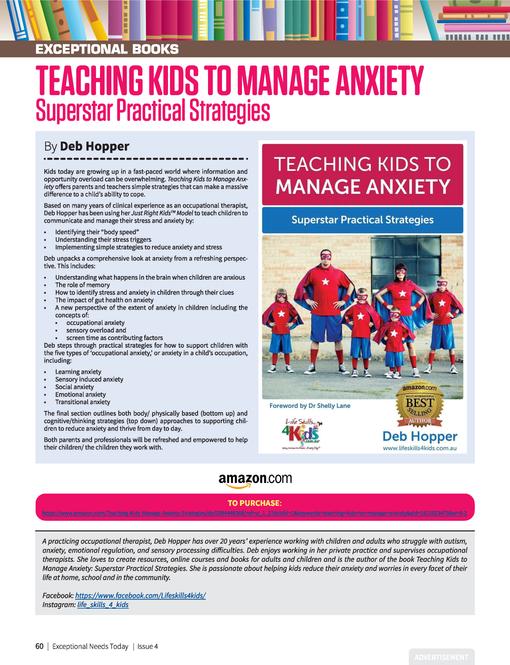

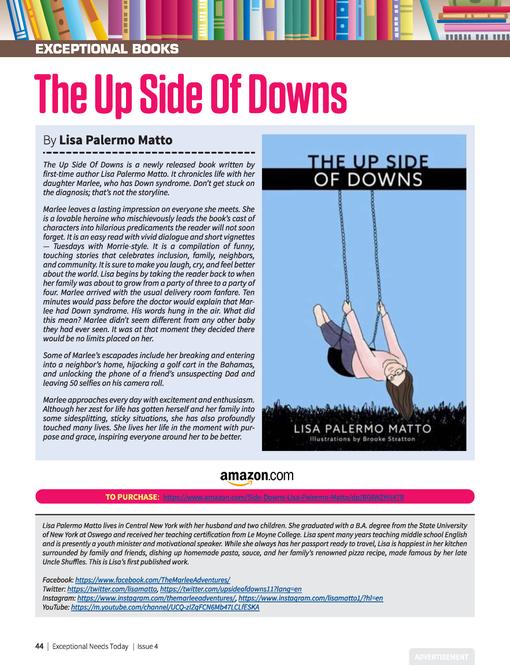
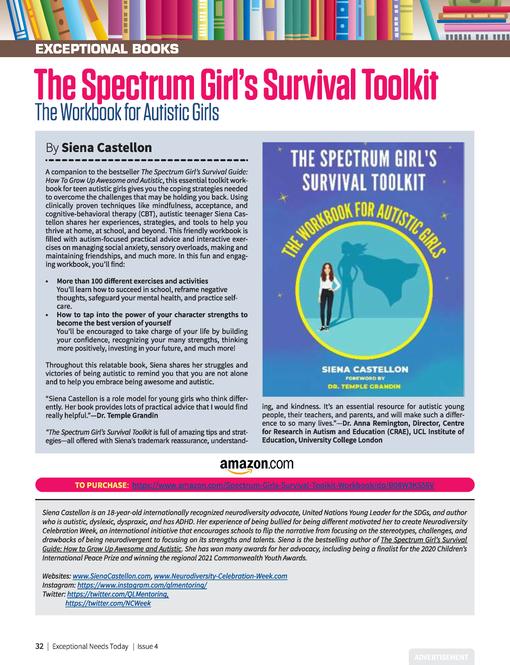



MEDIA KIT advertising@exceptionalneedstoday.com exceptionalneedstoday.com EXCEPTIONAL NEEDS TODAY H a v e y o u p u b l i s h e d a n E X C E P T I O N A L B O O K ? Exceptional Needs Today Let's tell everyone Ask us about a discounted advertorial
Growing Generations of Healthy Gardeners Nature Notes
 By Amy Wagenfeld, PhD, OTR/L, SCEM, EDAC, FAOTA
By Amy Wagenfeld, PhD, OTR/L, SCEM, EDAC, FAOTA
AN IMPORTANT TAKE-HOME MESSAGE ABOUT GARDENING AND GARDEN-RELATED ACTIVITIES IS THAT, AS CHARLES LEWIS SUGGESTED IN 1985, IN A WORLD OF CONSTANT JUDGMENT, PLANTS ARE NONTHREATENING AND NON-DISCRIMINATING. NO MATTER WHO YOU ARE, PLANTS ARE OPEN TO THE CARE WE PROVIDE THEM. THEY RESPOND ONLY TO THE ATTENTION THAT IS GIVEN TO THEM, NOT TO RACE, ETHNICITY, GENDER, INTELLECT, OR PHYSICAL CAPACITIES IN THE GARDEN.
Exceptional Needs Today | Issue 11 | 79
It just makes good sense that when plants thrive, the gardener will as well. There is a well-researched theory that supports this idea (Wilson, 1984). Based on the concept of biophilia—that humans are drawn to connect with living organisms—we are hard-pressed to be anything less than pleased when under our care, a plant sprouts, grows and bears fruit and flowers. Yet a more sustainable harvest can result when a garden is “the” place to develop measurable goal-directed, well-rounded, and developmentally focused learning opportunities for children and the adults who love and care for them.
Gardens present an ideal opportunity to focus on cognitive thinking skills in a purposeful and practical manner. Instead of working on math skills with worksheets, get your nature on! For instance, tasking a child to fill two baskets with five red bell peppers* in each basket starts with identifying the ripe (red) peppers and counting. It involves either looking at photos of red peppers and transferring this knowledge to the actual plant, or you, the adult, showing them real examples. It is more than math.
Language skills can be enhanced by talking about an array of basic plant names, colors, and preposition identification, all under the guise of gardening. If these lessons can happen in the garden, everyone gains the benefit of being outdoors, which research finds to support physical and mental health. If outdoors is not possible, sit close to your indoor plants while talking about their qualities (Dopko et al., 2019; Gray et al., 2015).
Our pepper harvesting task also addresses visual perceptual skills. Visual perception is the ability to take in visual information in our brain, process and interpret it, and then act on what we see. It is the meaning part of seeing. Here is one example: you can ask your child to tell and show you how they can fit five red bell peppers into each basket without any falling out. It is not only looking but also determining how the peppers can be arranged to fit in their respective basket.

There is a significant physical, motor-movement component involved in any gardening activity, regardless of whether it is done inside or outside, sitting or standing. Reaching up and bending down to pick the red bell pepper in a set amount of time is no easy job. As you may now know from reading my previous two columns about sensational gardening, our red bell pepper activity also offers myriad opportunities to engage the senses. For instance, picking peppers involves touch, smell, taste, sight, and even the proprioceptive and kinesthetic systems to figure out the right amount of pressure to pick only the pepper and not disturb any other part of the plant.
With an emphasis on social enterprise and environmental
sustainability, for older children, gardens also offer “fertile ground” for acquiring job and business skills by growing and selling products. Jobs skills are critical for children approaching transition age.
That said, gardens must first and foremost be designed to meet the needs of the widest range of users possible. This concept is the foundation for universal design. Garden beds need to be installed at different heights for sitting and standing gardeners that do not compromise their safety. Providing seating, shade, and water (for humans and plants) and accessible—flat, smooth, and wide—paths are essential. Choosing garden tools suited to the gardener’s abilities without being cumbersome and awkward is another important consideration. If sensitively designed, gardens are places for people to gather, a “natural” venue for socialization. They are places to explore, learn, and satisfy curiosity. They are places where everyone can make choices and be enriched. They are also
80 | Exceptional Needs Today | Issue 11 STAYING FIT AND HEALTHY
a place for contemplation, peace, and serenity. Gardens can and should be for all!
In my next column, I am going to focus on inclusive gardening practices, a topic that is near and dear to my “green” heart.
References
*Wagenfeld, A. (2011). Growing healthy garden(ers). Leaflet, 28(4), 16.
Wilson, E.O. (1984). Biophilia. Harvard University Press. Dopko, R. L., Capaldi, C. A., & Zelenski, J. M. (2019). The psychological and social benefits of a nature experience for children: A preliminary investigation. Journal of Environmental Psychology, 63, 134–138. https://doi.org/10.1016/j.jenvp.2019.05.002


Gray, C., Gibbons, R., Larouche, R., Sandseter, E., Bienenstock, A., Brussoni, M., Chabot, G., Herrington, S., Janssen, I., Pickett, W., Power, M., Stanger, N., Sampson, M., & Tremblay, M. (2015). What is the relationship between outdoor time and physical activity, sedentary behaviour, and physical fitness in children? A systematic review. International Journal of Environmental Research and Public Health, 12(6), 6455–6474. https://doi.org/10.3390/ijerph120606455

Amy Wagenfeld, PhD, OTR/L, SCEM, EDAC, FAOTA, is Principal of Amy Wagenfeld | Design and Lecturer in the Post-Professional Occupational Therapy Doctoral Program at Boston University. She is a Fellow of the American Occupational Therapy Association and the Center for Health Systems and Design at Texas A&M University and holds evidence-based design accreditation and certification (EDAC) through the Center for Health Design, specialty certification in environmental modifications (SCEM) through the American Occupational Therapy Association, and certification in healthcare garden design through the Chicago Botanical Garden. Amy presents and publishes widely on topics relating to access to nature and is co-author of the award-winning book Therapeutic Gardens: Design for Healing Spaces published by Timber Press. When not designing gardens, researching, or developing garden and nature programs, Amy can be found happily digging in the dirt.
Website: www.amywagenfelddesign.com Blog: http://workjournal.org/nurture-through-nature Email: amy@amywagenfelddesign.com
EXCEPTIONAL NEEDS TODAY Exceptional Needs Today is a FREE resource designed with you in mind Magazine subscriptions are funded entirely by advertisers and sponsors. To help us keep our resources FREE for everyone, please visit our website SUPPORT page. WAYS YOU CAN SUPPORT A FREE RESOURCE https://exceptionalneedstoday.com/support/ Exceptional Needs Today | Issue 11 | 81 STAYING FIT AND HEALTHY
Hats Off to Our Exceptional Contributors and Book Authors
We want to thank our remarkable contributors who, in concert with our supporters, have helped shape our publication into an award-winning magazine.
We are honored by our alliances with leaders in the exceptional needs community and have plans to grow our reach AND our team in 2023. As many of you know, Exceptional Needs Today received the Gold Award from the prestigious Mom’s Choice Awards honoring excellence in 2021. We dedicate this recognition to everyone who shared their voices with us.

Please help us congratulate the following people selected for this special recognition.

82 | Exceptional Needs Today | Issue 11 EXCEPTIONAL ADVOCATE
Top Psychologist
Rose Adams, OTD, OTR/L
Rose Adams, OTD, OTR/L, is an occupational therapy practitioner with a clinical focus in pediatrics. She works with children and families of children on the autism spectrum and other neurodiverse needs. Dr. Adams has worked in schools, private practice settings, and community-based programs. She is the executive director at Changing Lives Occupational Therapy, P.C., and currently works at a community-based preschool in New York. Dr. Adams is a graduate of Boston University’s Post Professional Occupational Therapy Doctorate (PP-OTD) program. Her doctoral project focused on using song-based interventions to support young children with autism and related disabilities so they could participate in schoolbased occupations.
Top Parenting Advice Writer
JC Ellinger
JC Ellinger brings life stories and experiences as an autism mom to publications such as Autism Parenting Magazine and Exceptional Needs Today. She is currently working on her first children’s book geared at bringing relatability and support to other ASD children, just like her amazing son. She carries an MBA from Regis University and a B.A. in Communications from CSU Long Beach. Now, she is returning to graduate school to add an M.A. in English to her resume and spread her love for writing to young minds.
Top Education Writer

Toby Tomlinson Baker, PhD
Toby Tomlinson Baker earned her PhD at Pepperdine University in Leadership and Global Policy. She is a lecturer at California State University—Los Angeles (CSULA), and she teaches special education with the Los Angeles Unified School District. Dr. Baker was awarded the Harrison Sylvester Award for her research by the Learning Disabilities Association (LDA) and has been CHADD’s 2018 Educator of the Year.
Website: https://tobytomlinsonbaker.net/

Top Rights Advocate

Guy Stephens
Guy Stephens lives in Southern Maryland with his wife and two amazing children. He started the Alliance Against Seclusion and Restraint to raise awareness about the use of restraint and seclusion in classrooms across our nation. He has been meeting with local, state, and federal lawmakers to support legislation to ban seclusion and reduce the use of restraint in schools across the nation. Guy is the Executive Director of the Alliance Against Seclusion and Restraint.
Website: https://endseclusion.org
Top Child Safety Advocate
Nicole Moehring
Nicole Moehring’s daughter and son, who has Fragile X Syndrome and autism, were both victims of sexual abuse. As a mother suffering through this unbelievable nightmare, Nicole witnessed extreme differences in the justice system of how her daughter was believed and treated well when her son was not. She also quickly recognized the distinct differences in recovery, trying to find support and resources. Nicole and her daughter Maci founded Voices of Change 2018 (VOC18), a nonprofit or-ganization, to begin making much-needed change for children with disabilities and their families. By sharing their lived experiences and through collaborations with other individuals, mental health professionals, law enforcement, and organizations, they are building a foundation of advocacy, abuse aware ness, resources, and supports for children with disabilities.
Website: https://www.voicesofchange2018.org/
Top Exceptional Needs Writer
Melissa Dean, PhD
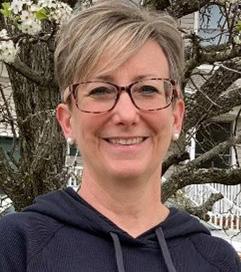


Melissa Dean is a homeschool mom to eight children who range from ages nine to twenty-six. Her youngest three children have exceptional needs. She has a PhD in Special Education and is an Adjunct Professor of Education at Regent University. She is passionate about helping children with special needs maximize their potential. She lives in Chesapeake, VA, with five of her children, two dogs, a beta fish, and a bearded dragon. Melissa loves books, plants, complicated coffee drinks, enjoys playing strategy games, and blogs occasionally at crosseyedliving.wordpress.com

EXCEPTIONAL ADVOCATE Exceptional Needs Today | Issue 11 | 83
Top Sensory Solutions Writer


Laura A. Ryan, OT, OTR, OTD
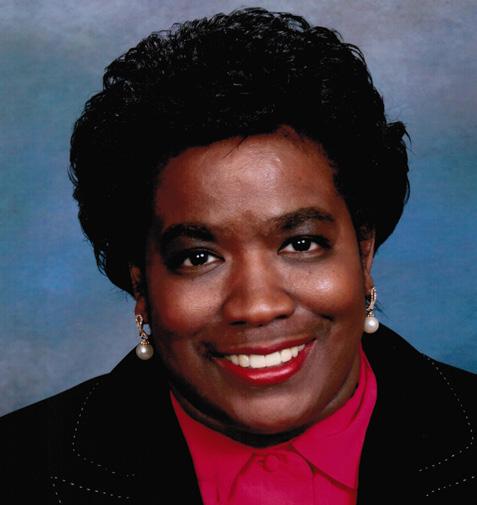
Laura Ryan is an occupational therapist who grew up on a large horse farm in Massachusetts.
She has been practicing for 30plus years and has been using hippotherapy as a treatment tool since 2001. She enjoys seeing the happiness and progress each person has achieved through the therapeutic impact of the horse. Laura has also developed a program for breast cancer rehabilitation using therapeutic input from the horse.
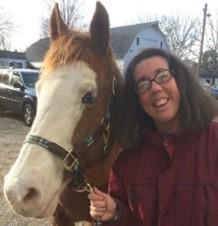
Top Parental Support Writer
Diana Romeo
Diana Romeo is a proud, full-time, stay-at-home mother of two children. For 19 years, she has been on the front line of mothering a very sweet boy who falls on the moderate-to-severe side of the autism spectrum. She is also a mother to a sweet and drama-filled 17-year-old daughter. She recently published her first book, From an Autism Mom with Love. In addition, she has published articles describing her family’s adventures in autism in Autism Parenting Magazine and Exceptional Parent Magazine. She has a degree in business management and has worked in human resources.
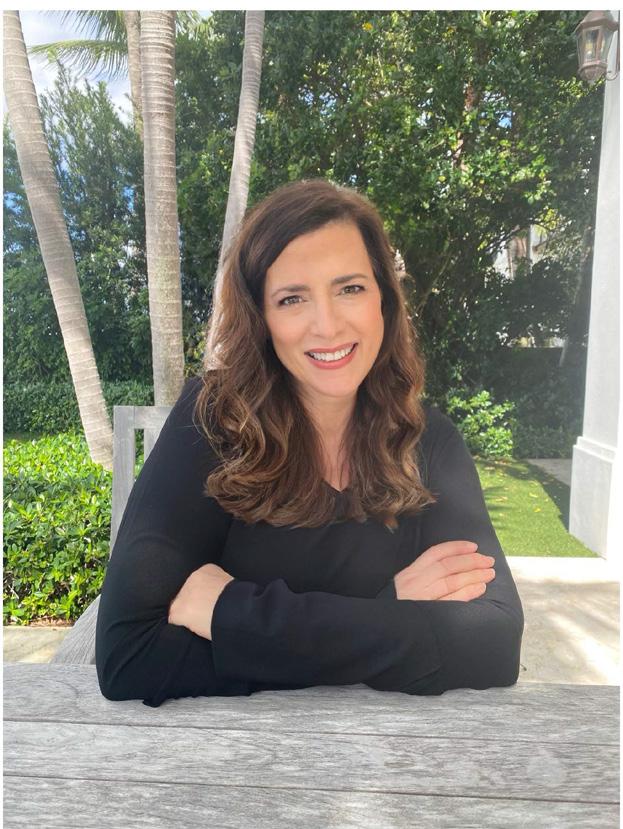

Top Parenting Solutions Writer
Andrea Pollack
After practicing law for 19 years, Andrea Pollack left that career to homeschool her autistic son when she could not find a school in which he could thrive. After nearly eight years of homeschool-ing, her son returned to school. Instead of returning to a law career, Andrea wanted to share her knowledge and experience with other parents. She pursued further educa tion and earned a Master of Science in Education (MSEd) to maxi mize her impact in supporting parents. She started Autism Parent Solutions to educate, support, and empower parents with parent coaching to reclaim the joy of parenting as they help their autistic children reach their highest potential.
Website: https://autismparentsolutions.com/
Top Family Guidance Writer
Deanna Picon
Top Advocate Richard Schreiber PMP, CSM, CSPO

Richard Schreiber’s deepest passions as the father of an autistic daughter pushed him to found the NYC Autism Community Group in Manhattan to help parents with children on the spectrum navi-gate their day-to-day challenges. His passion is to bring tech, innovation, and career opportunities to families with autistic kids and adults to better themselves so they can live the lives they deserve. They hosted several events in 2022, including the Virtual Autism Support and Innovation Summit and their first NYC Autism Tech, Innovation, and Careers Expo. Richard cofounded the Ubuntu Game (Games 2 Unite, LLC), creating an experiential multi-media board game to teach teens about diver-sity and inclusion through conversations, role play, and activities. Their goal is to reverse racism, bigotry, bullying, and stereotyping in the world. He welcomes everyone to join them on their jour-ney!
Website: www.ras-consulting.com
Deanna Picon is the founder of Your Autism Coach, LLC, which provides comprehensive support programs and seminars for parents of special needs children. Her personal mission is to empower parents as they advocate for their children while balancing productive work and family lives. As the parent of a nonverbal young man with autism, Deanna understands the impact of autism on a family. She knows first-hand how heartbreaking a diagnosis of autism can be for parents and the personal struggles that often follow. But, through her own journey with autism, Deanna also recognizes the special joys, rewarding experiences, and unique life gifts which can result from raising a child with special needs. Deanna’s articles have appeared in Exceptional Needs Today magazine, Autism Parenting Magazine, Exceptional Parent Magazine, and Parenting Special Needs Magazine. Her academic credits include a Bachelor of Arts degree in Psychology and a Bachelor of Arts degree in Broadcast Journalism from Syracuse University.
Website: www.yourautismcoach.com
EXCEPTIONAL ADVOCATE 84 | Exceptional Needs Today | Issue 11
Top Parenting Coach
Beatrice (Bea) Moise, MS, BCCS
Beatrice (Bea) Moise, MS, BCCS, is a Board-Certified Cognitive Specialist, parenting coach, national speaker, and author of Our Neurodivergent Journey. Her U.N.I.Q.U.E. Parenting channel on YouTube is dedicated to educating individuals on neurodiversity.
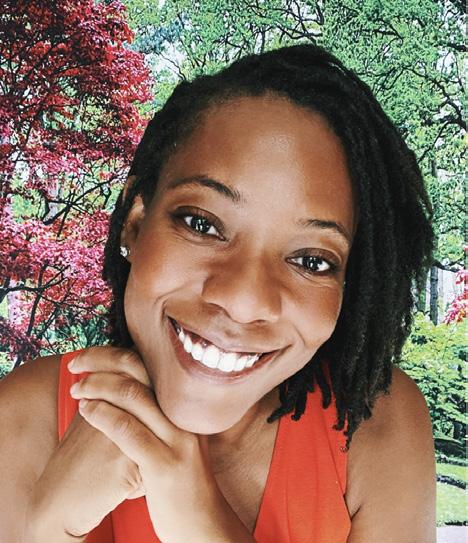
Website: https://www.achild-likemine.com/
Top Psychologist
Patrick LaCount,
Top Autism Advocate
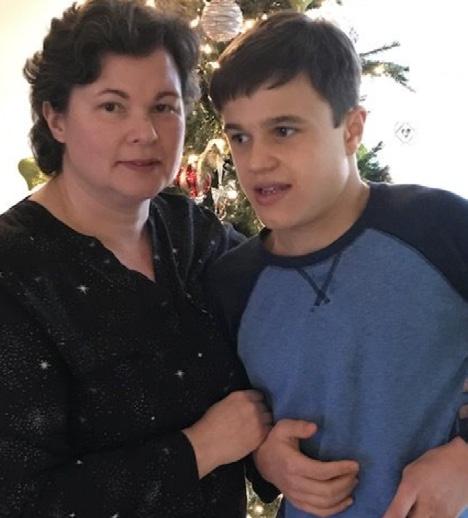
Ewa Omahen, PhD

Ewa Omahen, PhD, is an Oakland County, Michigan resident and the mother of her young adult son, Patrick, who is diagnosed with autism spectrum disorder (ASD). Patrick attends a post-secondary program in Rochester Community Schools. Ewa works as a psychologist for Walled Lake Consolidated Schools. She is a passionate advocate for her son and all individuals with disabilities. Patrick and the students she works with continue to be her greatest joy and inspiration.
PhD
Patrick LaCount, PhD, is the director of Practical Psychological Services in Fort Collins, Colorado, and specializes in the assessment and treatment of ADHD. Dr. LaCount completed his doctorate in clinical psychology at the University of Wyoming, predoctoral residency at Duke University Medical Center, and postdoctoral fellowship at Seattle Children’s Hospital. In addition to providing psychological services, Dr. LaCount is passionate about disseminating the latest science to the ADHD community and is a research consultant for the “How to ADHD” YouTube channel.

Website: https://PracticalPsychServices.com
Top Board-Certified Behavior Analyst
Brandon Clark, PsyD, BCBA

Brandon Clark, PsyD, BCBA, is a Board-Certified Behavior Analyst at Springbrook Autism Behavioral Health in Travelers Rest, South Carolina. He is completing his doctorate degree in psychology. Brandon began his career in the field of Applied Behavior Analysis in 2010. Since then, he has worked in treatment schools, private settings, crisis intervention settings, day program facilities, and he has owned a private practice for several years. Brandon is the author of the book, The Mis-fits; Told by a Behavior Analyst, detailing a collection of experiences from the treatment school where he first started. Currently, he is a Human Rights Committee member, Ethics Committee Chair for South Carolina Association for Behavior Analysis (SC ABA), and serves as a board member for Lowcountry Autism Foundation
Website: https://springbrookbehavioral.com/
Top Special Education Specialist
Karen
Kaplan
Karen Kaplan is a native San Franciscan. She completed her bachelor’s and master’s degrees at Arizona State University, Tempe, Arizona, in speech pathology and audiology. She minored in Special Education and obtained her speech therapist and special education credentials in California. Karen worked as a speech therapist for both public and private schools for 20 years before opening her own residential and education program for students with autism spectrum disorders. She worked in credential programs at Sacramento State University as well as UC Davis and spent 20 additional years directing private schools for those with autism and similar learning challenges. Karan founded a small nonprofit, Offerings, which travels globally helping other cultures understand those with developmental challenges. For seven years, she founded and facilitated an autism lecture series and resource fair in Northern California. Karen still facilitates an Autism Awesomeness event yearly, showcasing the strengths and talents of those who live on the spectrum. She is currently consulting, helping families, schools, and centers for children, teens, and adults. Karen authored Reach Me Teach Me: A Public School Program for the Autistic Child; A Handbook for Teachers and Administrators in the early 70s and published her second book, On the Yellow Brick Road: My Search for Home and Hope for the Child with Autism, in 2017. Her third book, Typewriting to Heaven… and Back: Conversations with My Dad on Death, Afterlife and Living, is not about autism but about having important conversations with those we love.
Website: www.karenkaplanasd.com

EXCEPTIONAL ADVOCATE Exceptional Needs Today | Issue 11 | 85
Top IEP Consultant
Markeisha Hall, MA,
CATP
Markeisha Hall, MA, CATP, is an IEP Coach, Certified Autism Travel Professional, Parent Empowerment Partner, and CEO of Hallegacy, LLC. She also is married to her college sweetheart and has four beautiful children. After 11 dedicated years of facilitating over two dozen IEP meetings annually as a member of the Early Childhood Assessment Team, Markeisha knew she needed to be a Special Education Teacher and advocate to help parents be more impactful members at the table. In 2018, Markeisha became more intimate with this reality when her family adopted their youngest son. During the adoption process, he was diagnosed with autism. Markeisha is now bringing her IEP process mastery and special education expertise into consulting services to help parents take the lead on their students’ educational roadmap, create more inclusive educational and recreational experiences, and shift from awareness to empowered action.
Websites: https://markeisha-hall-empowerment-center. teachable.com/, https://www.markeishahall.com/podcasts/ markeisha-hall-s-podcast, https://ihelpmoms.com/consultants/ consultant/566/markeisha-hall


Top Young Voice
Coral Levkovitz
Coral Levkovitz is a 23-year-old future physician. She graduated from the University of North Carolina at Chapel Hill with a bachelor’s degree in biology. In addition, Coral is a second-degree Black Belt in Taekwondo and a licensed EMT. She currently works as a group fitness instructor for cancer survivors and is pursuing medical school. She hopes her journey with ADHD will inspire others to become the best version of themselves and to pursue their dreams.

Top Exceptional Needs Podcast
Tammy Flynn
Tammy Flynn is the creator of the On-Air Advocate: an online platform that provides education, advocacy, and supportive services for special needs parents, caregivers, and those with disabilities and complex medical conditions. She pulls from her experiences over the last two decades of working in the community as a mother, caregiver and advocate to provide the resources she found missing.
Website: https://www.onairadvocate.com/
2022 Book Awards

Autism Abracadabra: Seven Magic Ingredients to Help Develop Your Child’s Interactive Attention Span
By Kate C. Wilde
https://www.amazon.com/ Autism-Abracadabra-Ingredients-Interactive-Attention/ dp/178775751X

Traveling
Dawn M. Barclay
https://www.amazon.com/ Traveling-Different-Strategies-Inflexible-Neurodiverse/ dp/1538168669
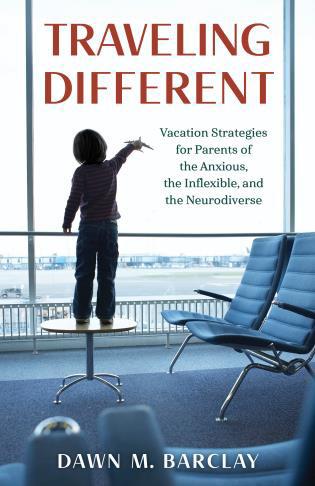
Different: Vacation Strategies for Parents of the Anxious, the Inflexible, and the Neurodiverse
EXCEPTIONAL ADVOCATE 86 | Exceptional Needs Today | Issue 11
The Interoceptive Mind: How to Become Your Most Effective Self by Improving Your Interoception and Microbiome

Nihan Altinsoy Marun, PhD, DVM
https://www.amazon.com/Interoceptive-Mind-Effective-Interoception-Microbiome-ebook/ dp/B0B5LF5C15
Forever Boy: A Mother’s Memoir of Autism and Finding Joy Kate Swenson



https://www.amazon.com/Forever-Boy-Mothers-Memoir-Finding/dp/0778311996
Amy KD Tobik is the editor-in-chief of Exceptional Needs Today magazine. She coordinates and directs an impressive group of doctors, therapists, and writers to provide expert guidance and support for special needs families. A graduate of Sweet Briar College in VA, Amy’s experience includes more than 30 years of writing/ editing monthly magazines, newspapers, technical documents/manuals, books, and websites. Her special interests include advocating for children, special needs families, and education. Amy is the CEO of Lone Heron Publishing, LLC.
Website: exceptionalneedstoday.com



EXCEPTIONAL NEEDS TODAY ADVERTISE WITH US Help us keep guidance FREE for ALL people Exceptional Needs Today MEDIA KIT exceptionalneedstoday.com advertising@exceptionalneedstoday.com EXCEPTIONAL ADVOCATE






MEDIA KIT advertising@exceptionalneedstoday.com EXCEPTIONAL NEEDS TODAY R E A C H Y O U R B U S I N E S S G O A L S ADVERTISE WITH US





























 By Dr. Chris Abildgaard, EdD, LPC, NCSP, NCC
By Dr. Chris Abildgaard, EdD, LPC, NCSP, NCC






 By Margo Marie McManus
By Margo Marie McManus



 By Marcia Eckerd, PhD
By Marcia Eckerd, PhD
















 By Rose Adams, OTD, OTR/L
By Rose Adams, OTD, OTR/L
























 By Laura A. Ryan, OT, OTR, OTD
By Laura A. Ryan, OT, OTR, OTD








 By Kate C. Wilde
By Kate C. Wilde




















































 By Meshell Baylor, MHS
By Meshell Baylor, MHS








 By Amy Wagenfeld, PhD, OTR/L, SCEM, EDAC, FAOTA
By Amy Wagenfeld, PhD, OTR/L, SCEM, EDAC, FAOTA











































